This small, self-reliant, agricultural settlement was established by Mormons in the 1880s at the confluence of the Fremont River and Sulphur Creek. Several buildings (including the schoolhouse described in the previous post) and the many orchards that remain are now maintained by the National Park Service.
Our first stop was the Blacksmith Shop.
Across from it is the Ripple Rock Nature Center, but it was not open when we were there.
The orchards in the park contain about 3,000 trees (peach, cherry, apple, apricot, pear, and plum) still produce fruit today. Visitors are welcome to pick ripe ones when in season.
At the picnic area are these massive Fremont cottonwood trees that were just saplings when the Mormons arrived in the 1880s. Over the decades they have provided habitats and shade for mammals, birds and reptiles.
The Fremont River is located nearby with paths on both sides of the lovely shaded area. These mule deer were unconcerned about the people in the area.
From the picnic area, we drove to the large parking area near the Gifford House Store and the iconic Pendleton-Jorgenson-Gifford Barn. Built by Pendleton in the early 1900s, it was sold to Jorgenson in 1919, and then to G. Dewey Gifford (who used it for 40+ years).
Today the Gifford House has displays of period artifacts, gift items, and fresh fruit pies.
The ONLY trail where dogs are permitted in Capitol Reef National Park is the Fremont River Trail (located behind the Gifford House). Our sweet doggie, Sadie, was thrilled to go for a hike (and a swim)!
The trail runs along the river with the campground on the other side to the amphitheater (where ranger-led programs are held) .
Orchards with healthy fruit-bearing trees can be seen along the trail, too. This young mule deer graced us with his presence!
This gopher snake was enjoying a leisurely afternoon on this tree branch.
When we returned to the Gifford House we treated ourselves to a delicious cherry pie with ice cream. Yum!!
The 8-mile Scenic Drive (south of the Gifford House) follows the western escarpment of the dramatic Waterpocket Fold (that runs for 100 miles at the park). It was originally a wagon trail that led to one of the few passages (Capitol Gorge) through the fold.
The Slickrock Divide is the highest point on Scenic Drive. As we hiked around this area it was apparent how much of a barrier the Waterpocket Fold is!
The old Wagon Trail can be clearly seen at the next overlook on the Scenic Drive.
The rock formations here continued to amaze us!
At the end of Scenic Drive, the (unpaved) Capitol Gorge Road continues for about 2.5 miles. This route was used by Native Americans and early settlers to travel east to west through the Waterpocket Fold. Once Highway 24 was paved in the 1930s, most abandoned this route.
Only the hardiest of plant and animal species can survive in this arid climate. We were thrilled to see a big horn sheep on the cliffs above us. During periods of rain (only 10” annually), water collects in the rocks providing an important water source.
The road ends at the Capitol Gorge Trailhead. The trail is an easy 1 mile each way and runs through the deep canyon where historic inscriptions can be seen on the cliff walls.
Because our doggie, Sadie, was not permitted on the trail (and it was too hot to leave her in the car), I only walked a short distance on it.
Flash flooding can be very dangerous in this canyon (as it is in all others in the area), so hikers need to be cognizant of the weather forecast!
The Golden Throne Trailhead is also located near Capitol Gorge. It is a 4-mile roundtrip strenuous hike. The Golden Throne rock formation is shown below. Also, look carefully at the second photo of the cliffs here.
Yep, there’s another big horn sheep surveying the surrounding area from a cliff ledge.
What a great day. Oh the sights we saw! The dramatic landscape is so impressive. And the sharp contrast between the lush green orchards in the Fruita Historic District and the arid desert is fascinating. This is my new favorite national park in Utah (but all of them are amazing!)
For additional information about Capitol Reef National Park, go to www.nps.gov/care.
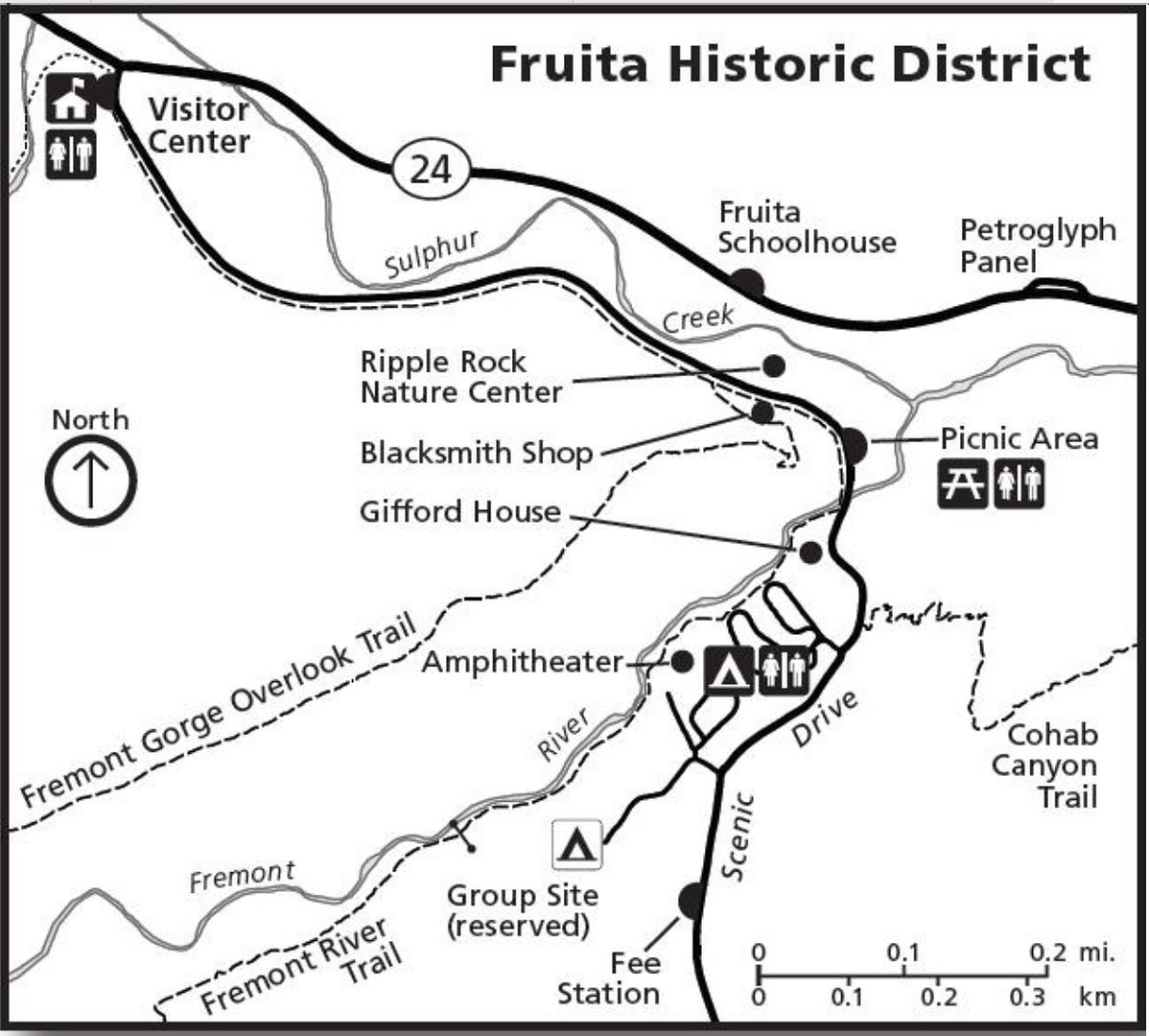
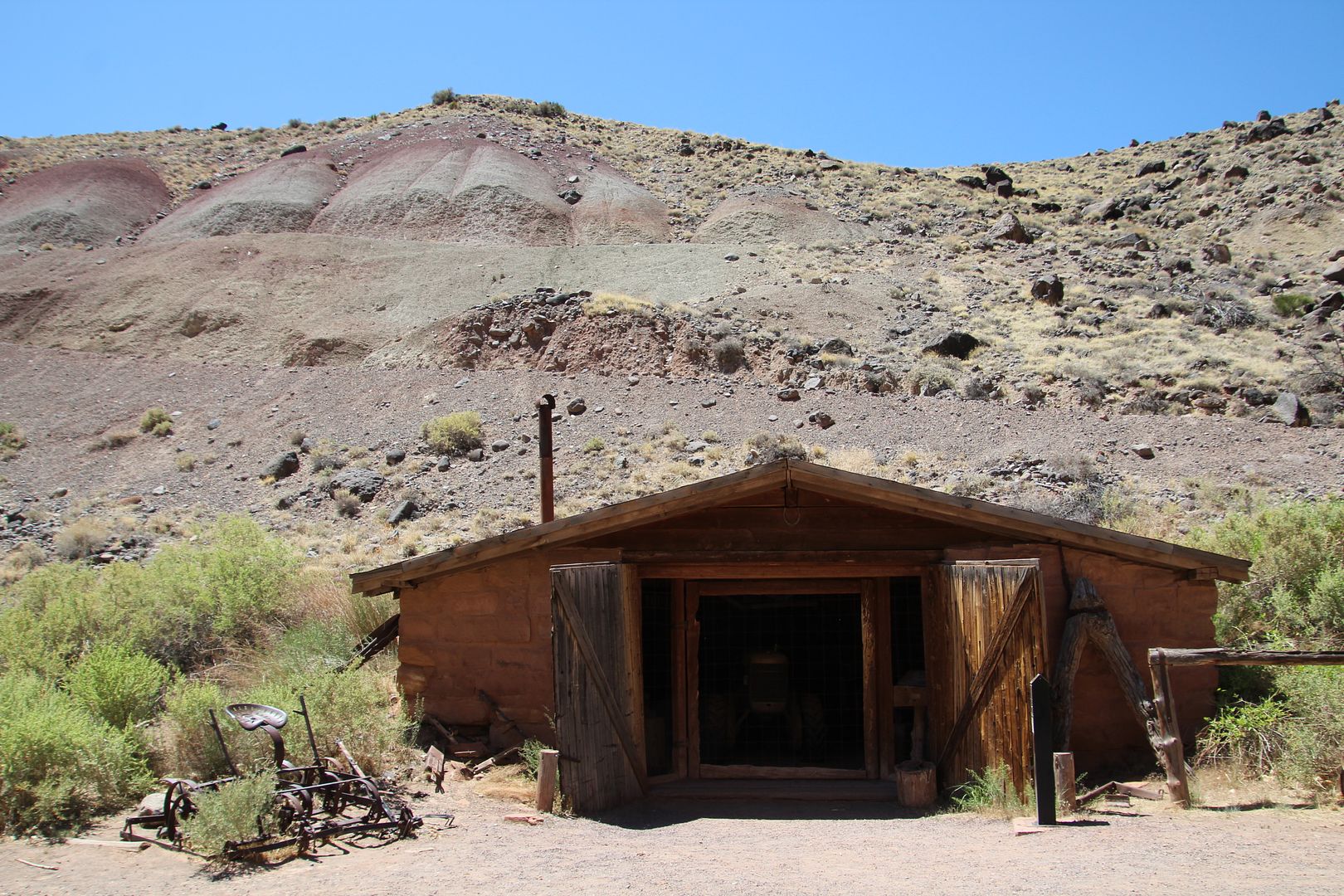
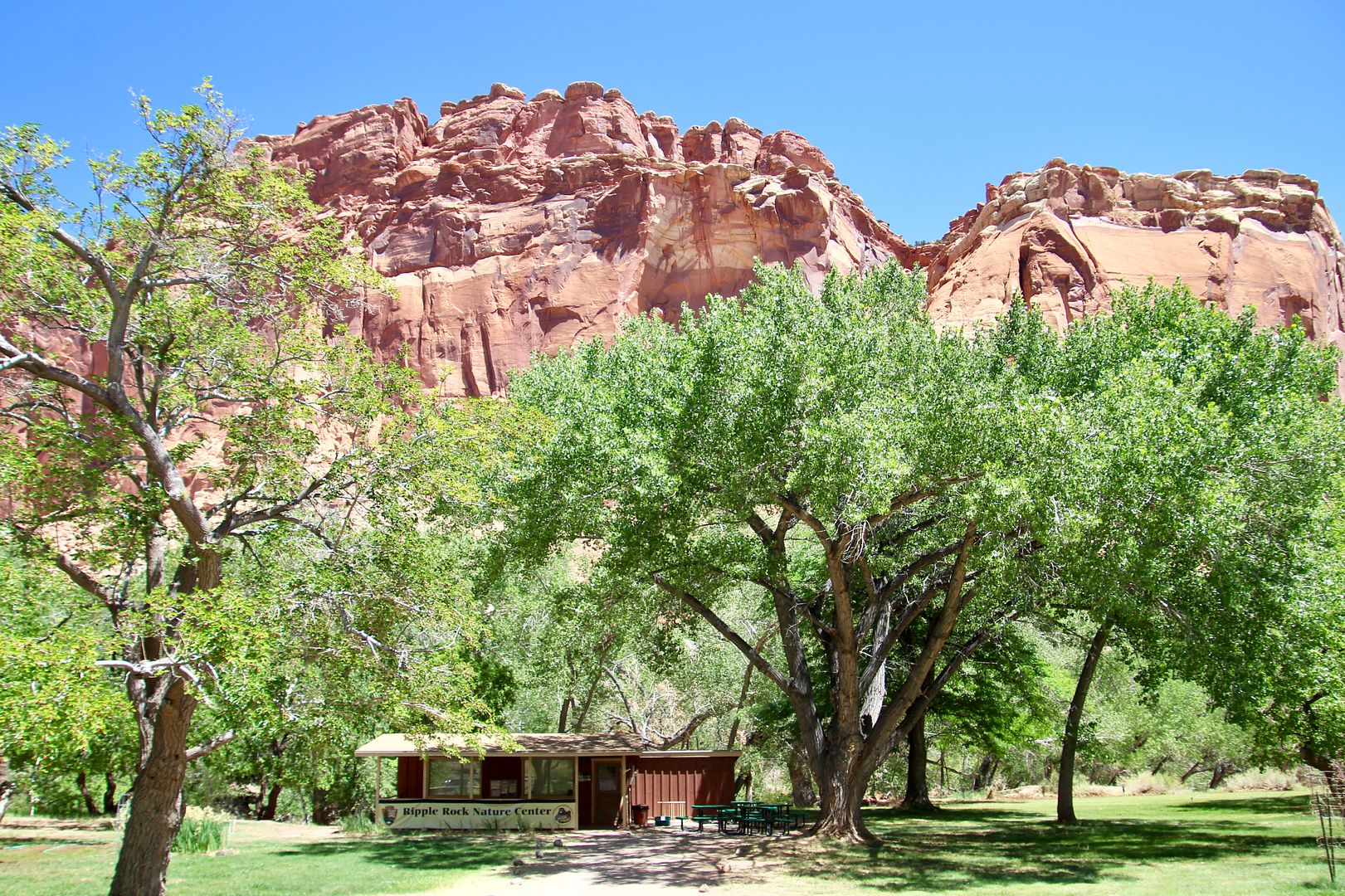
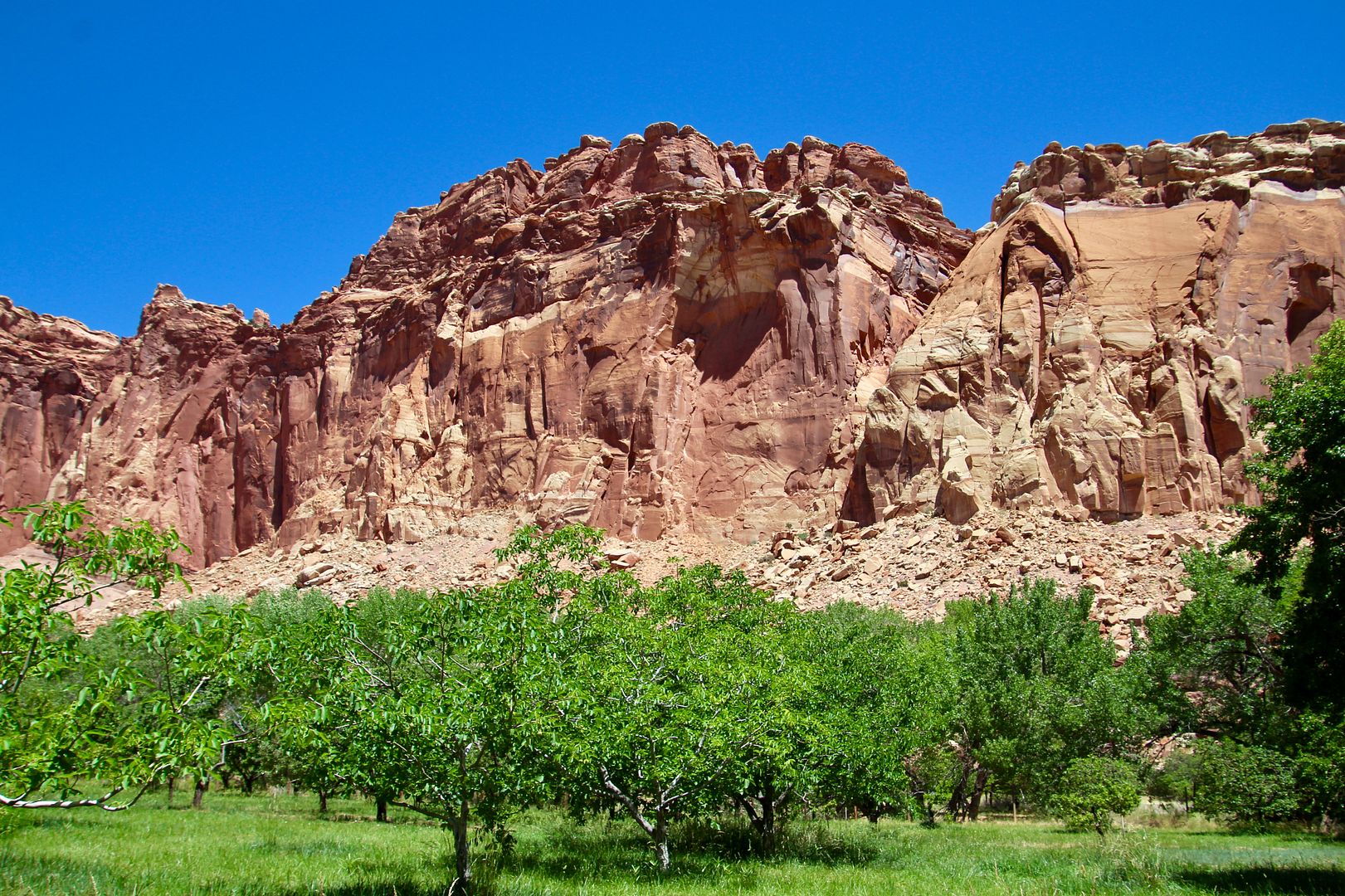
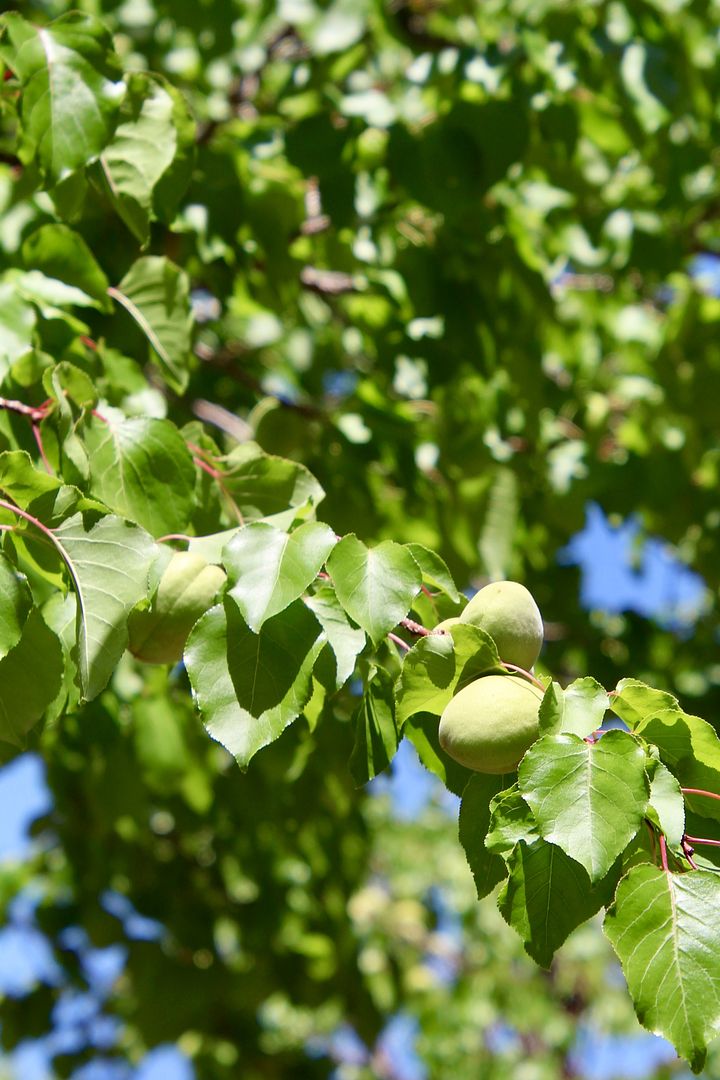
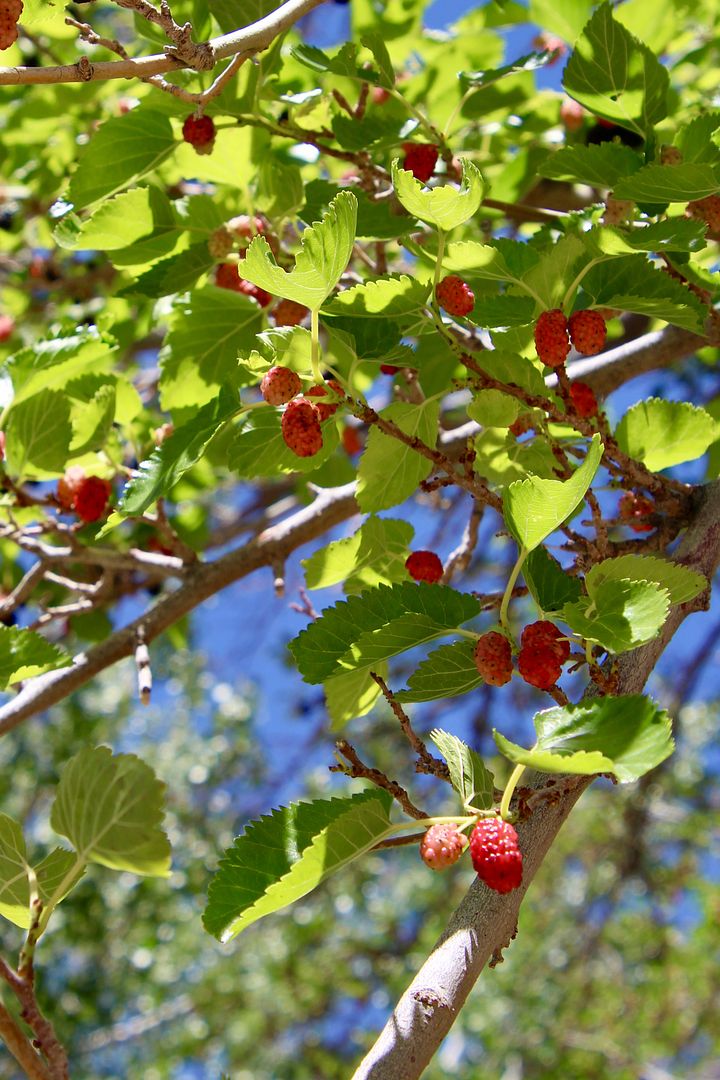
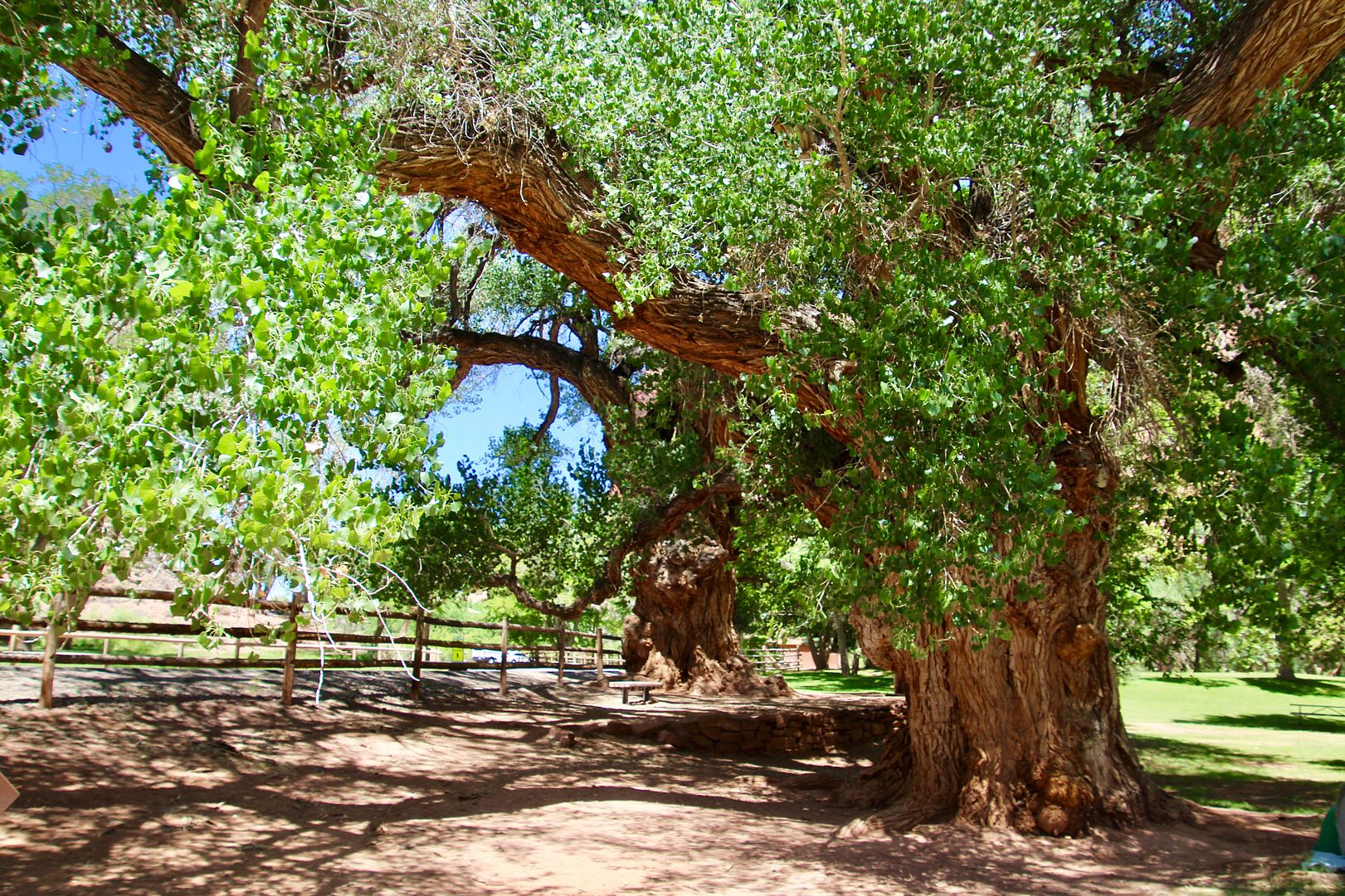
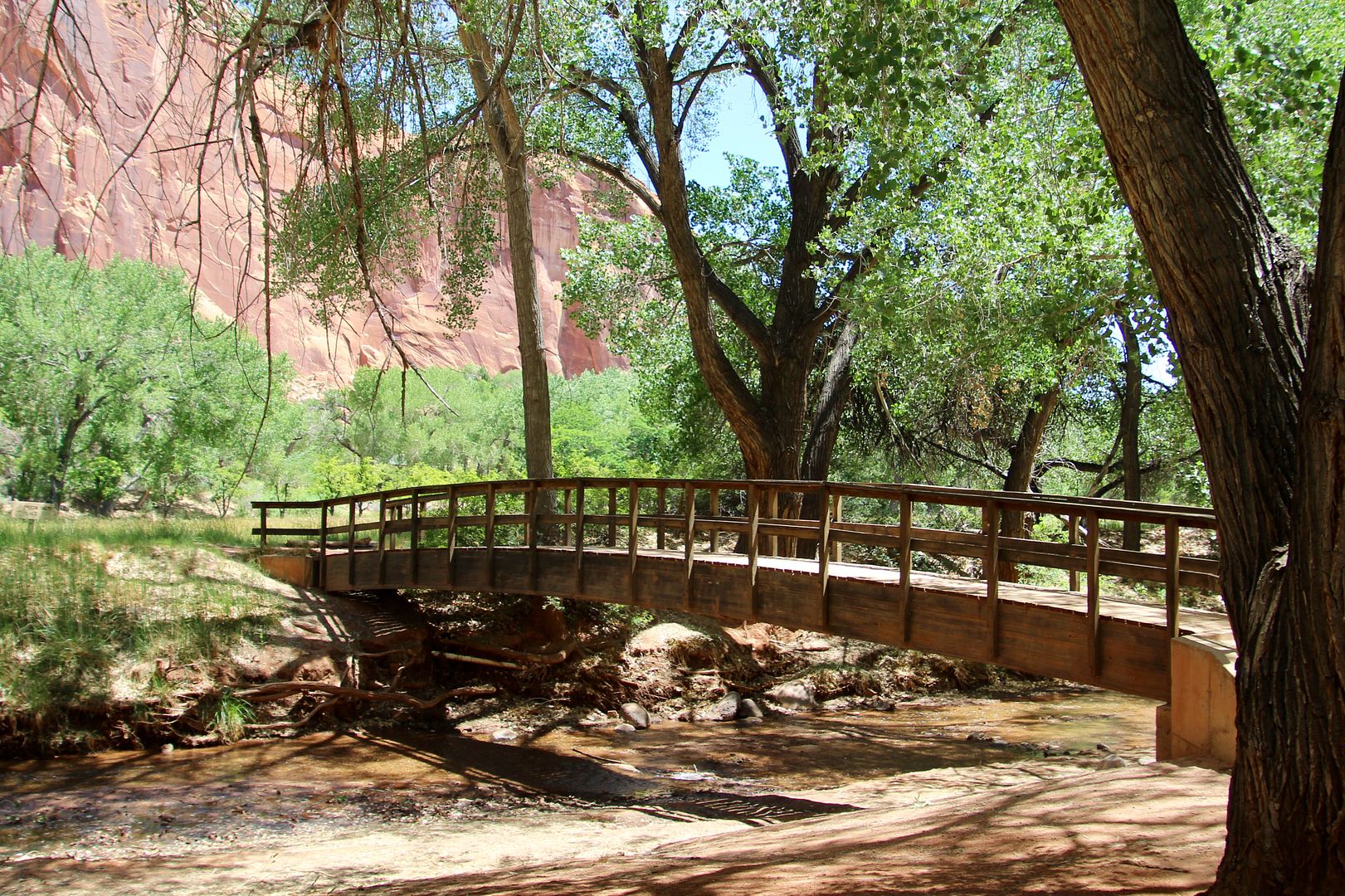
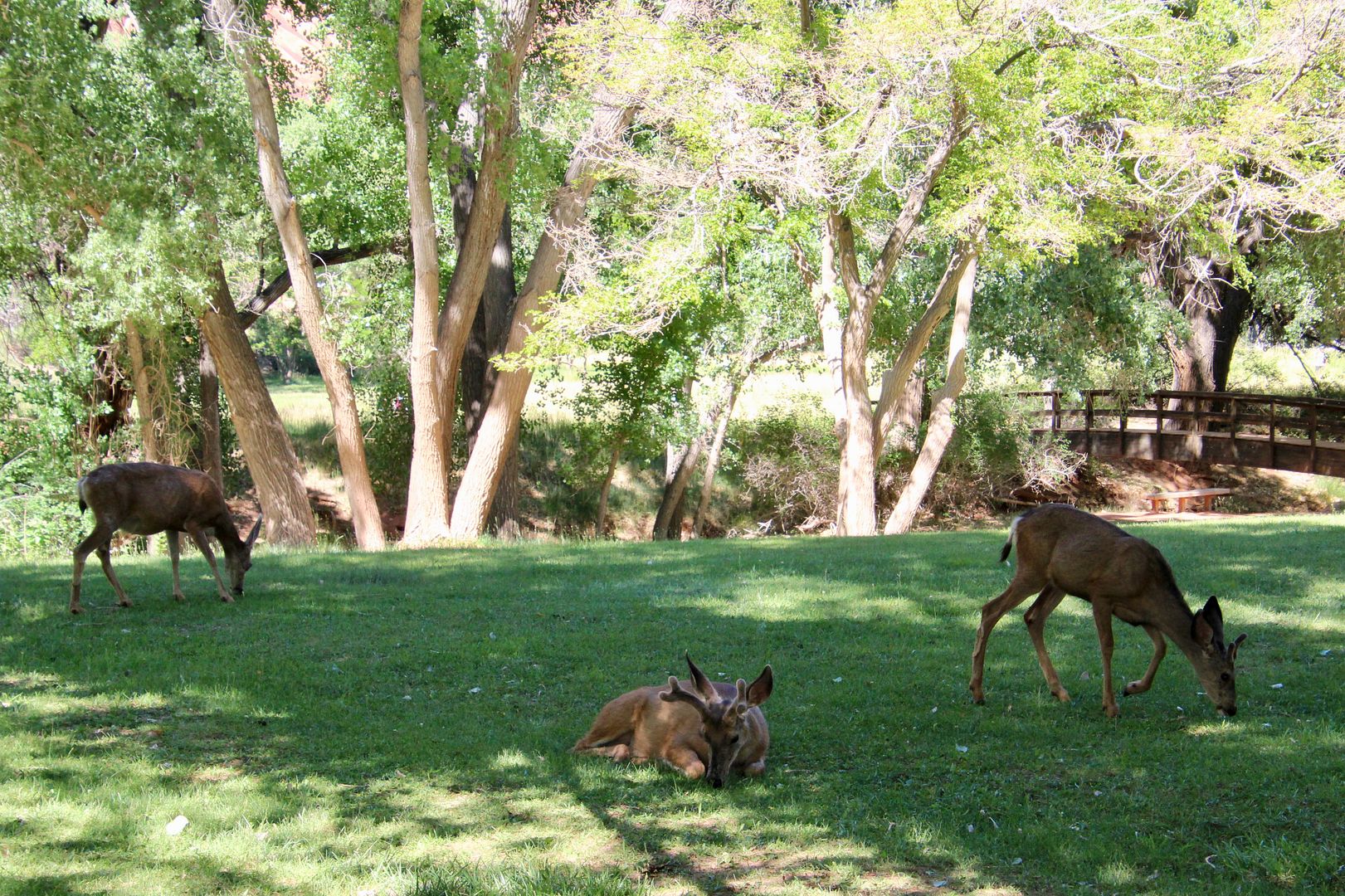
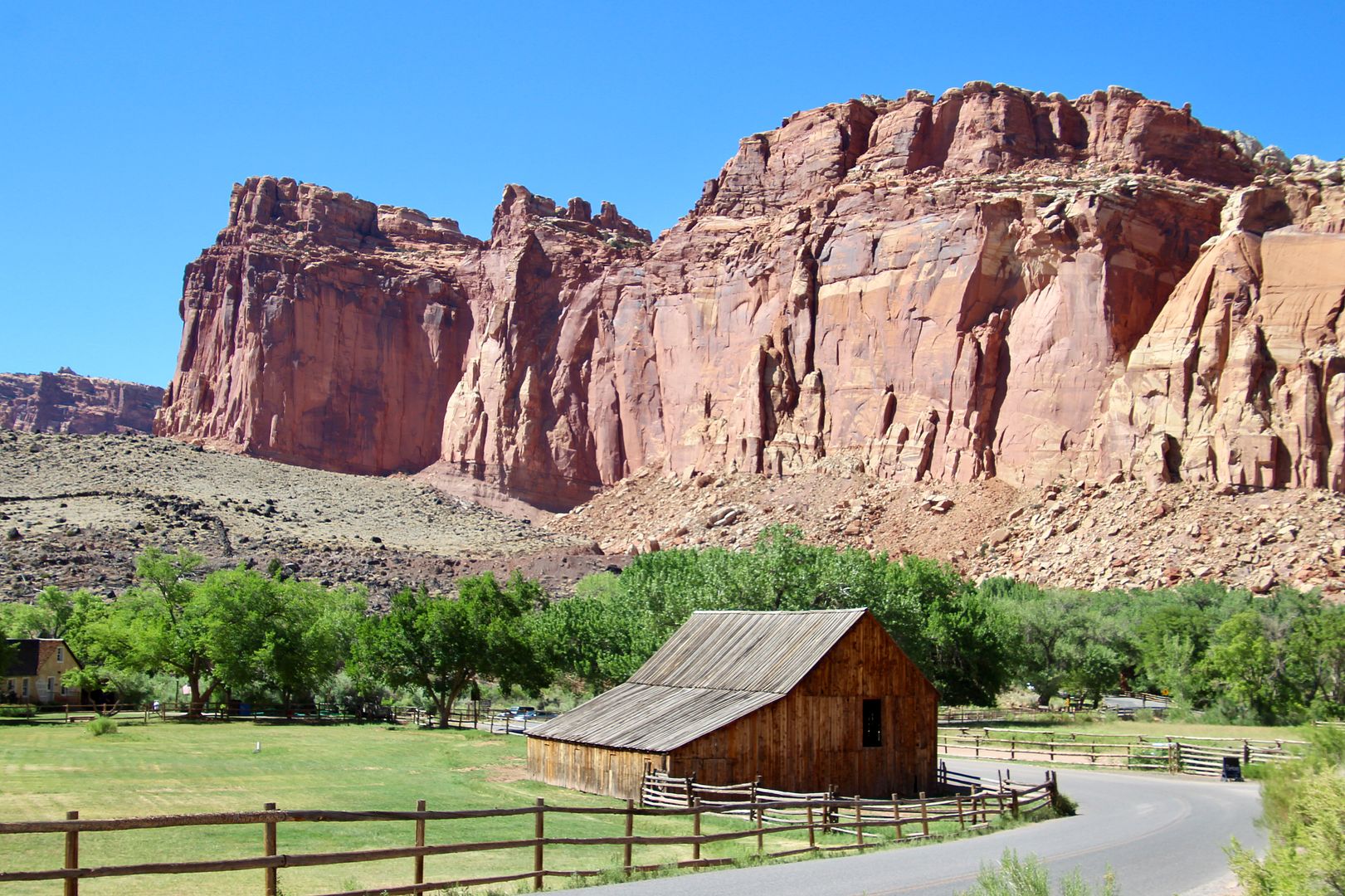
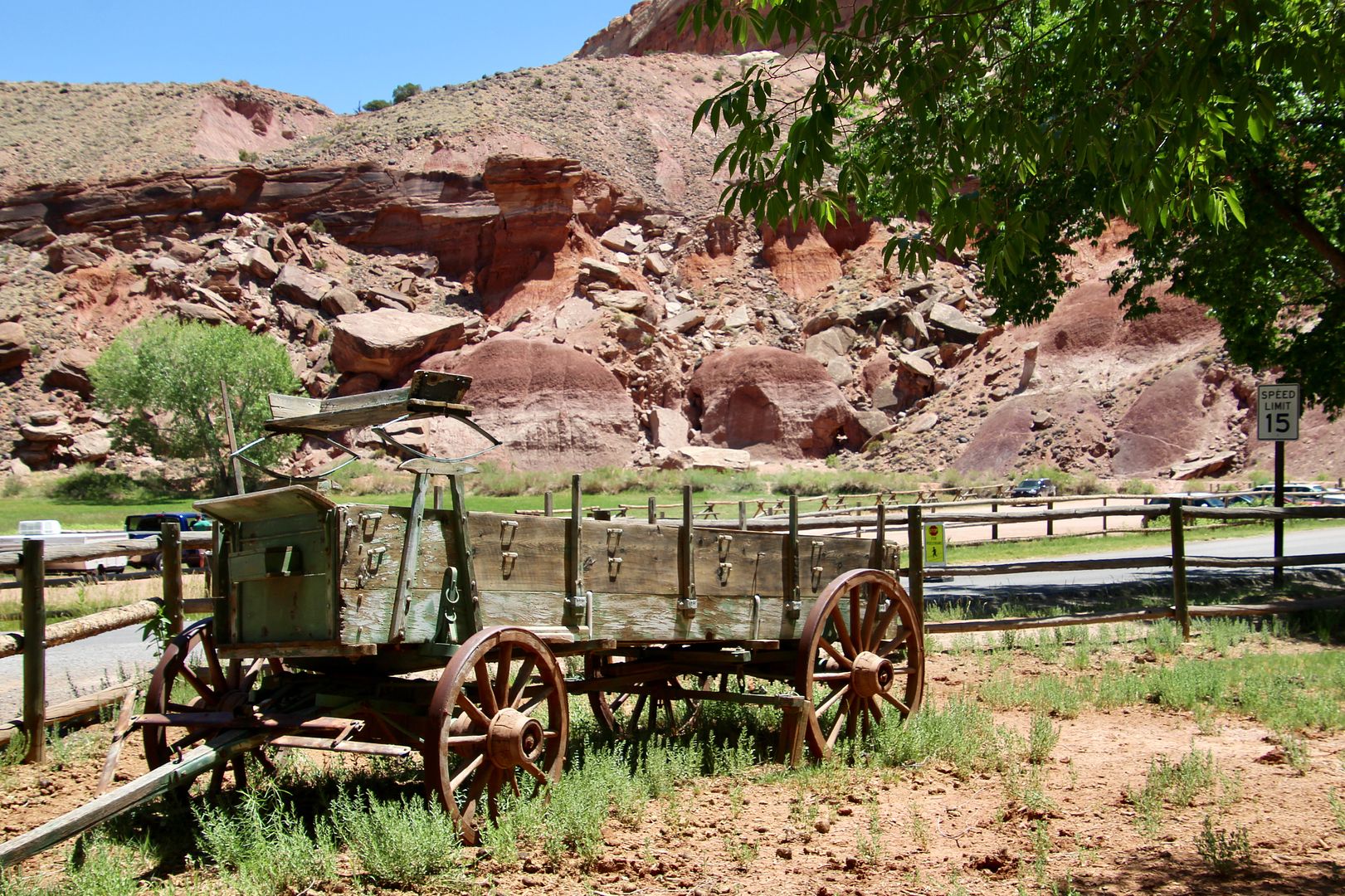
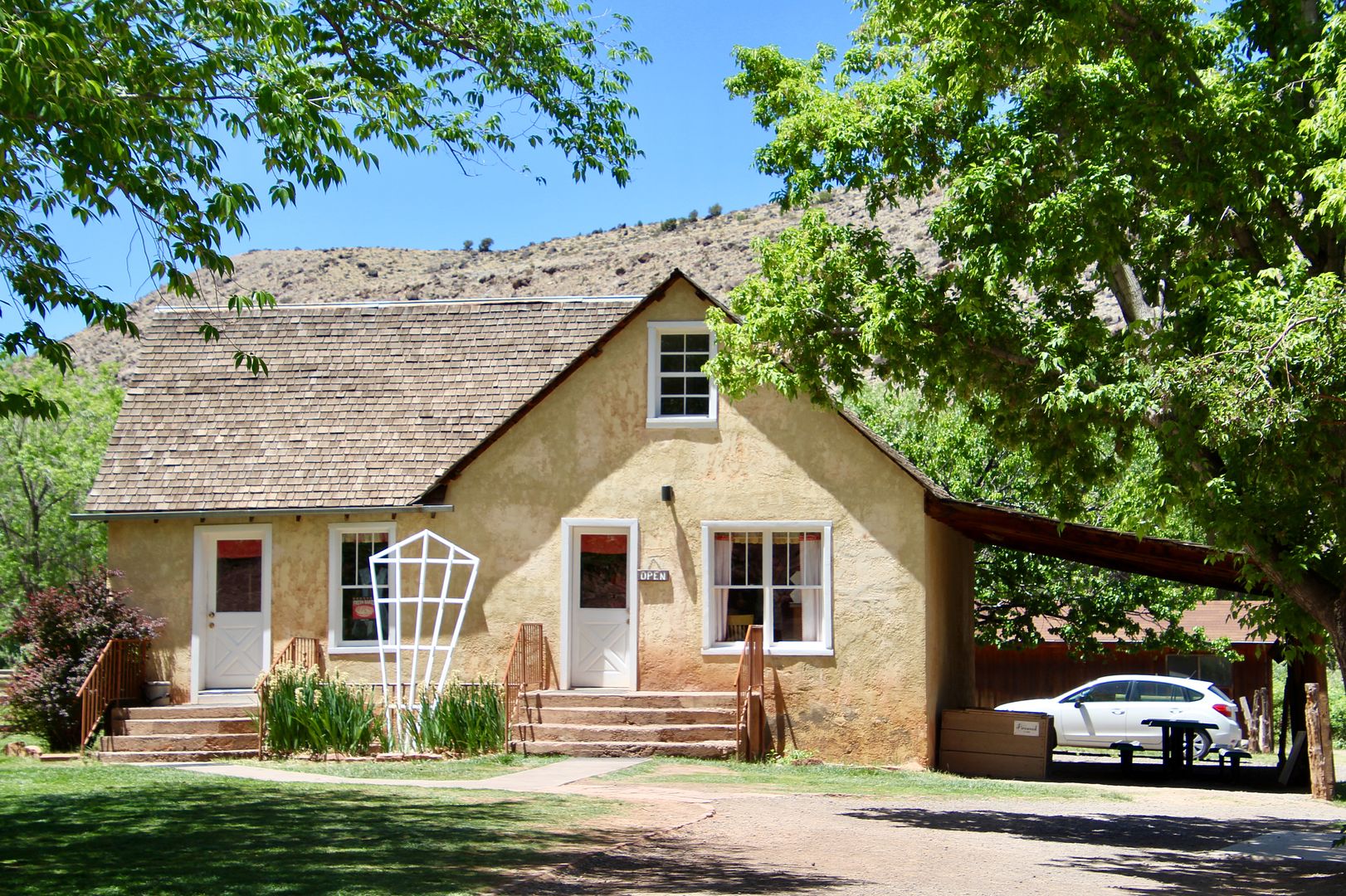


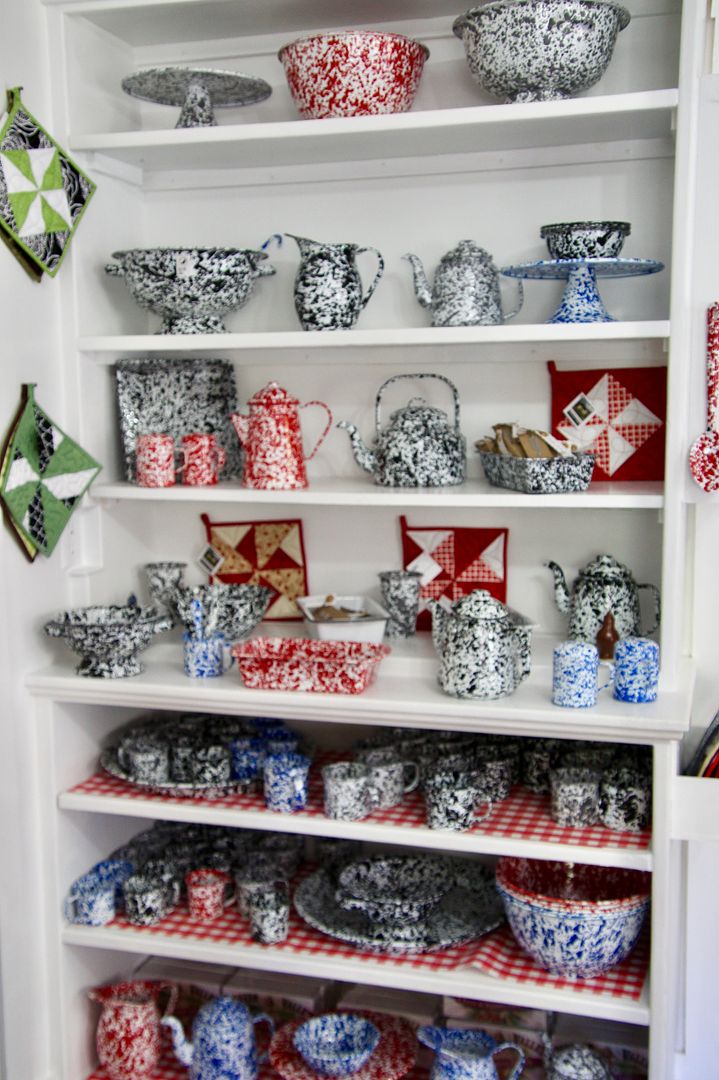

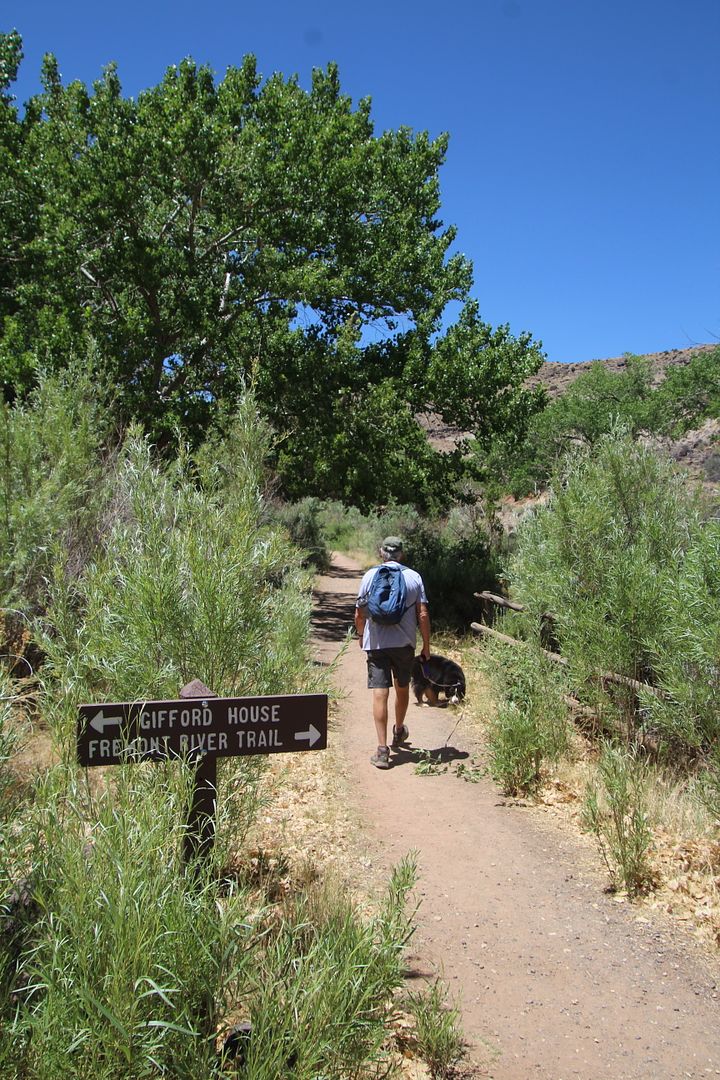
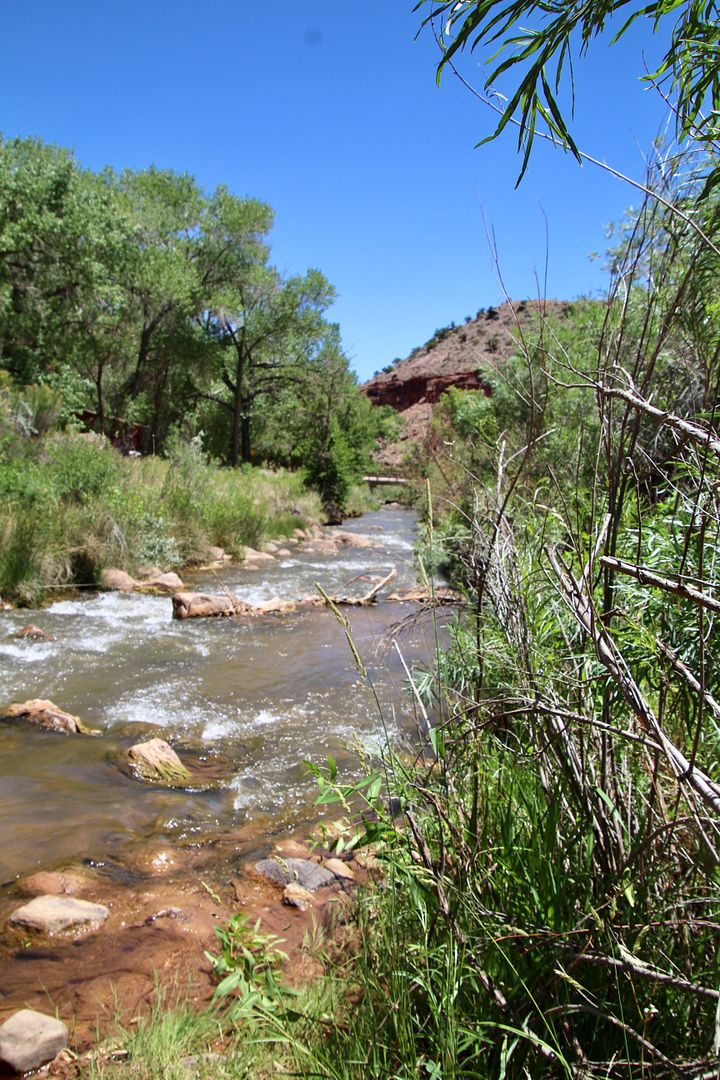

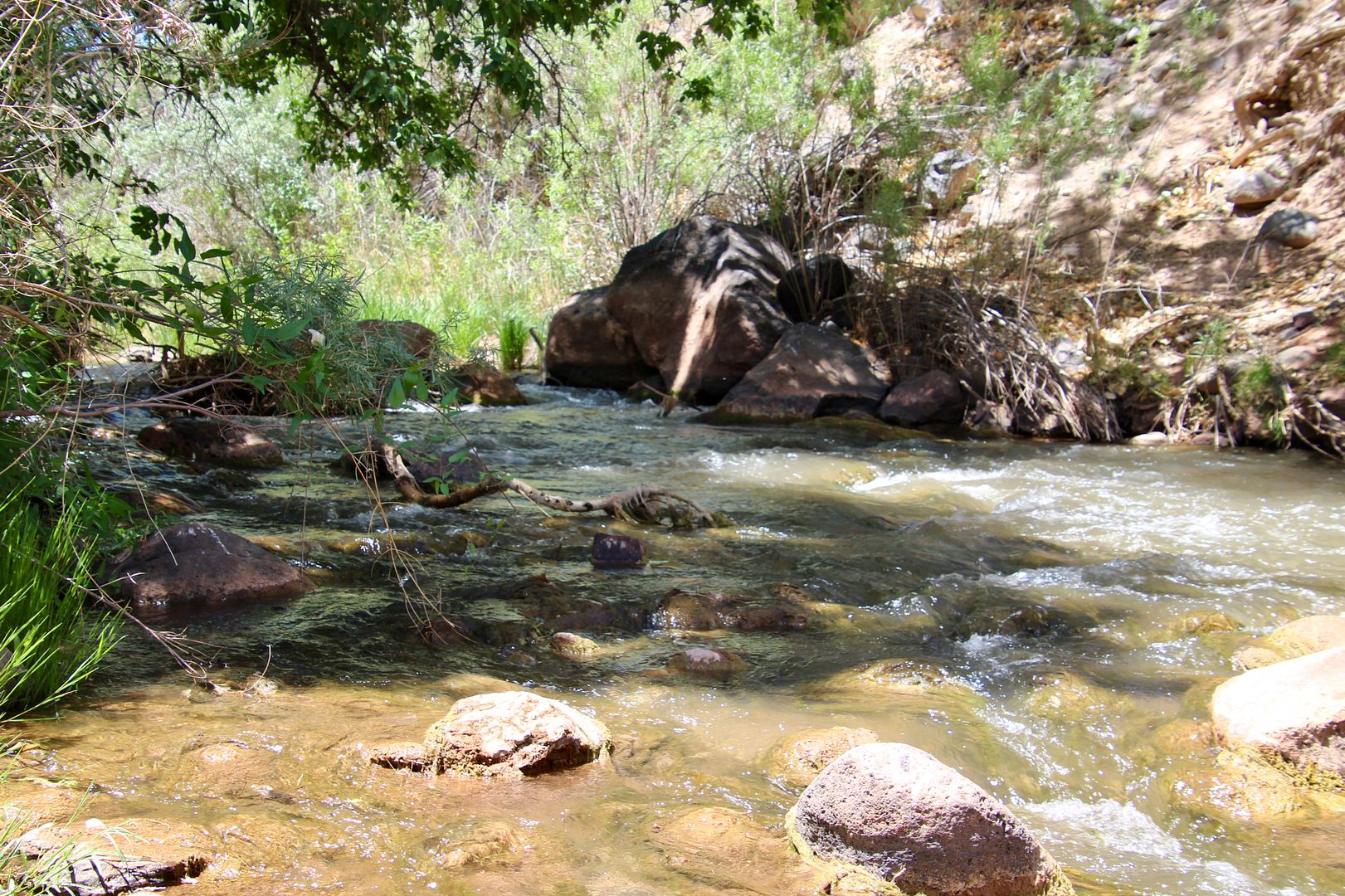
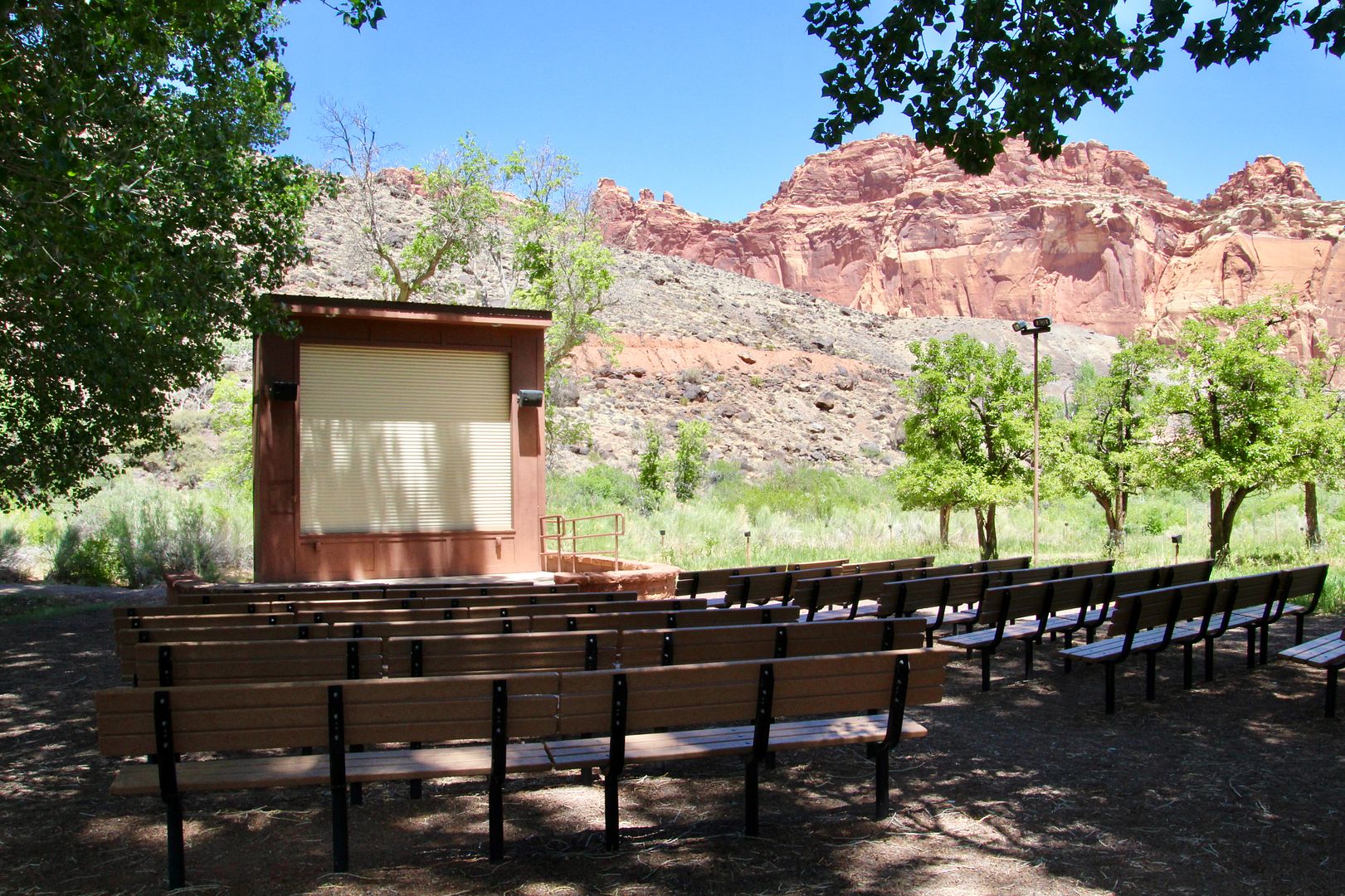
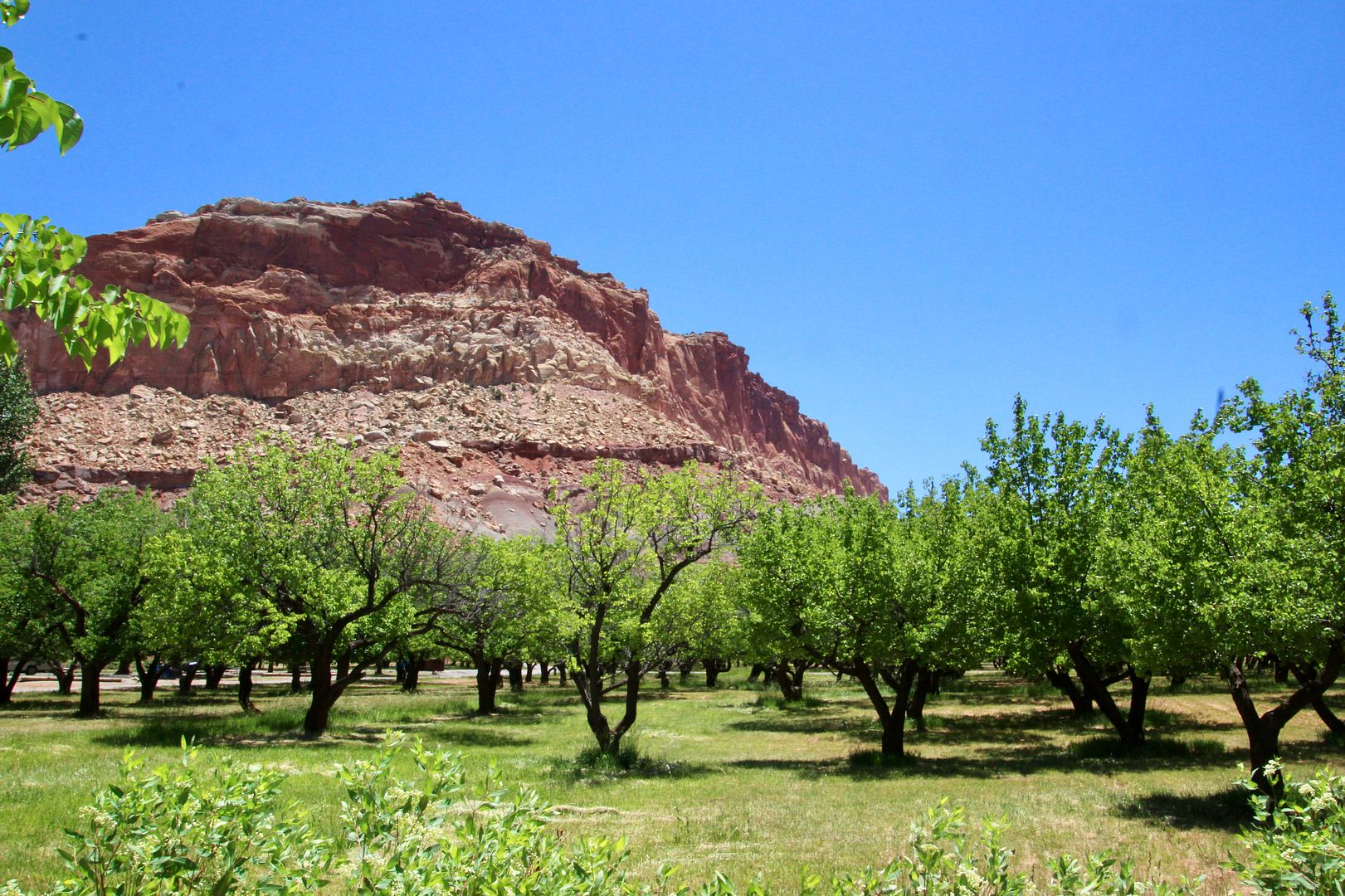
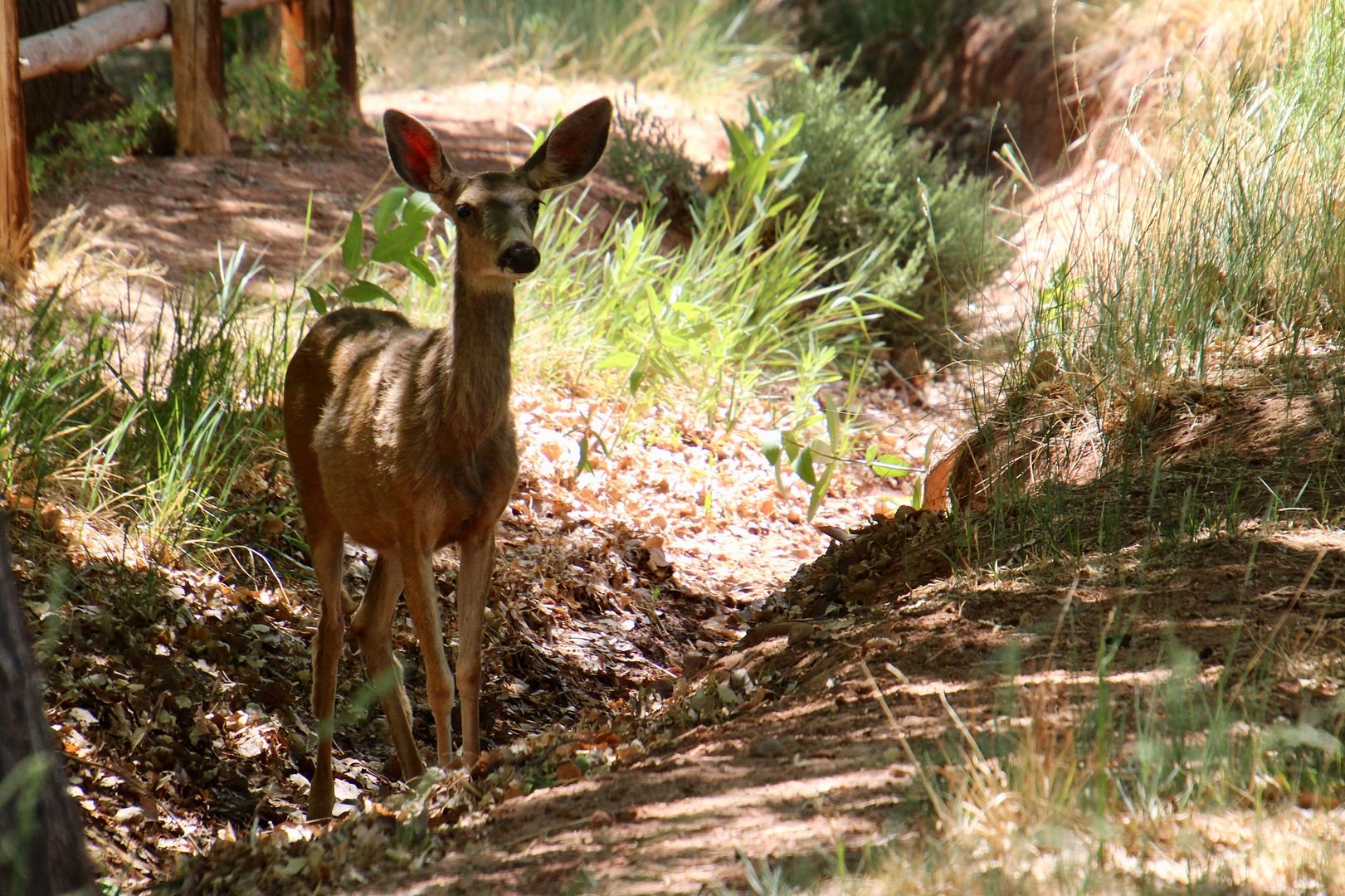

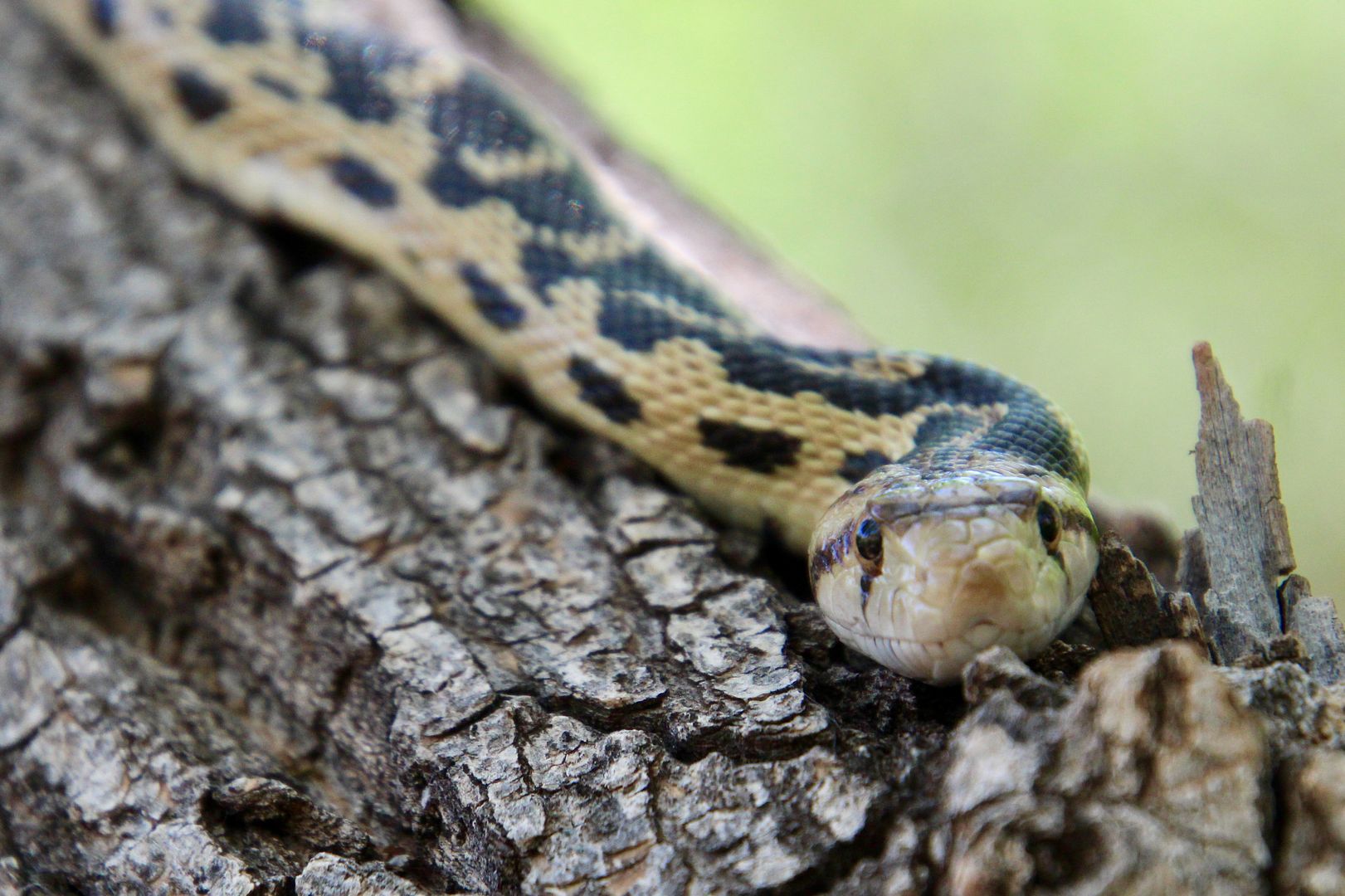
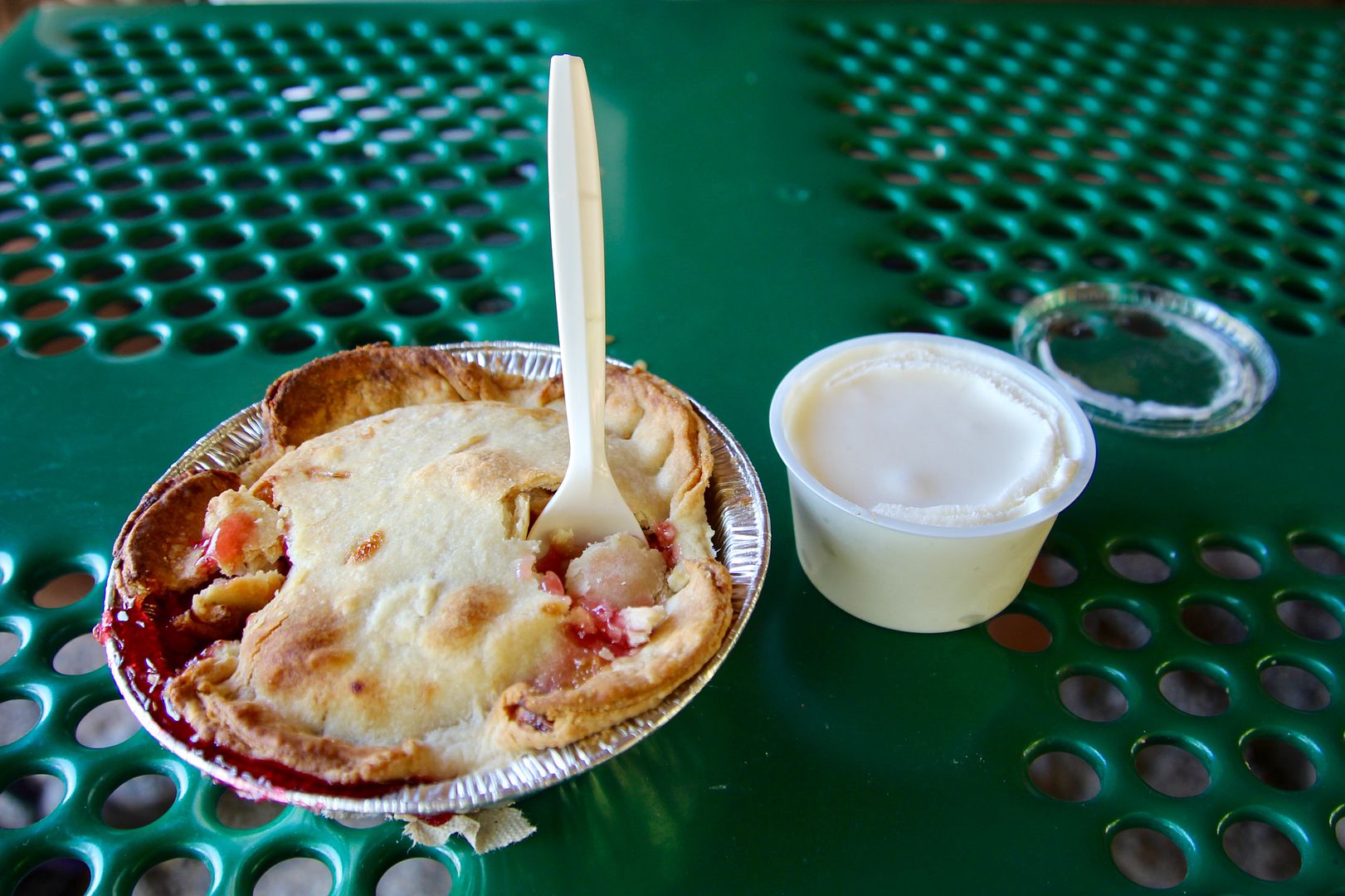
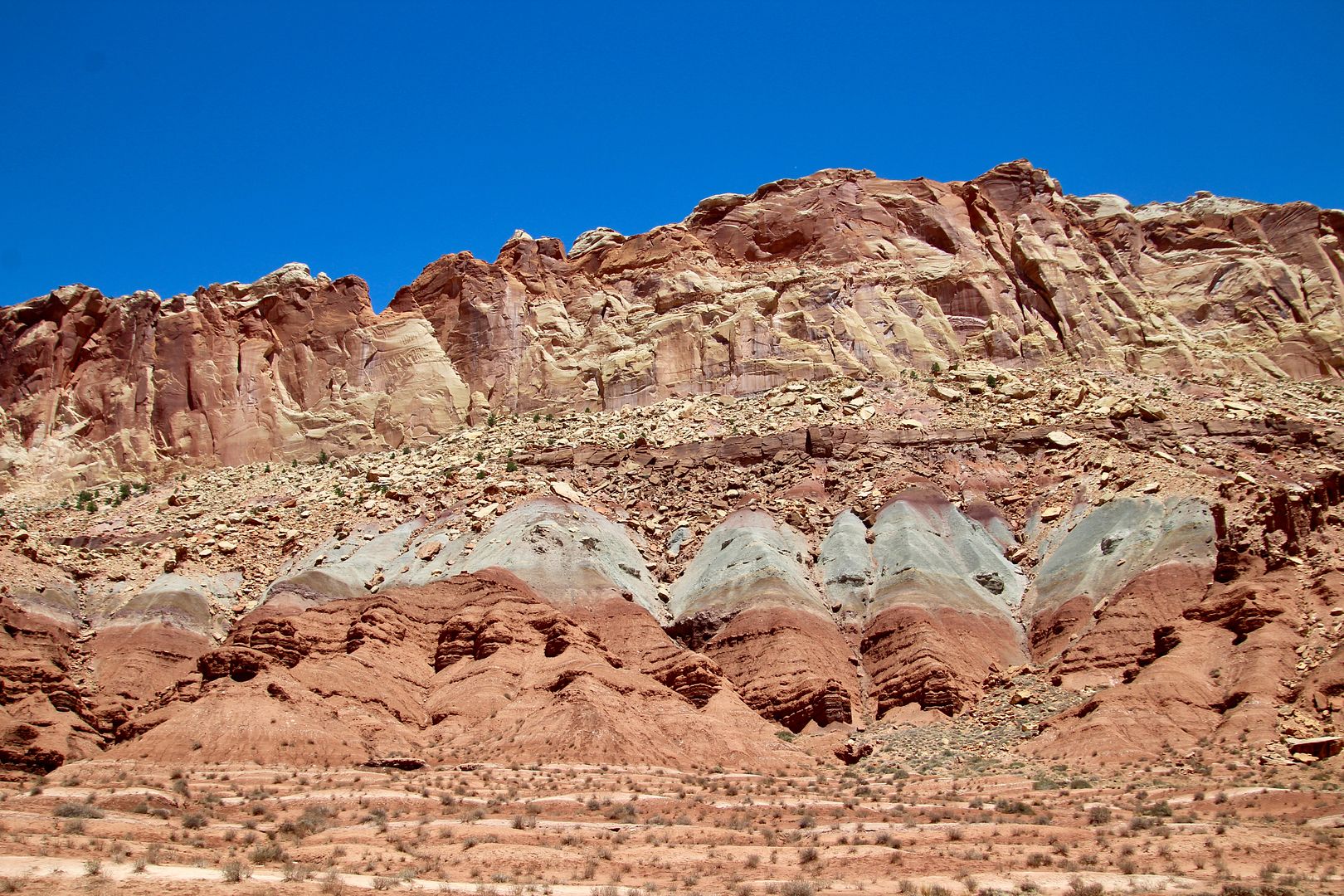
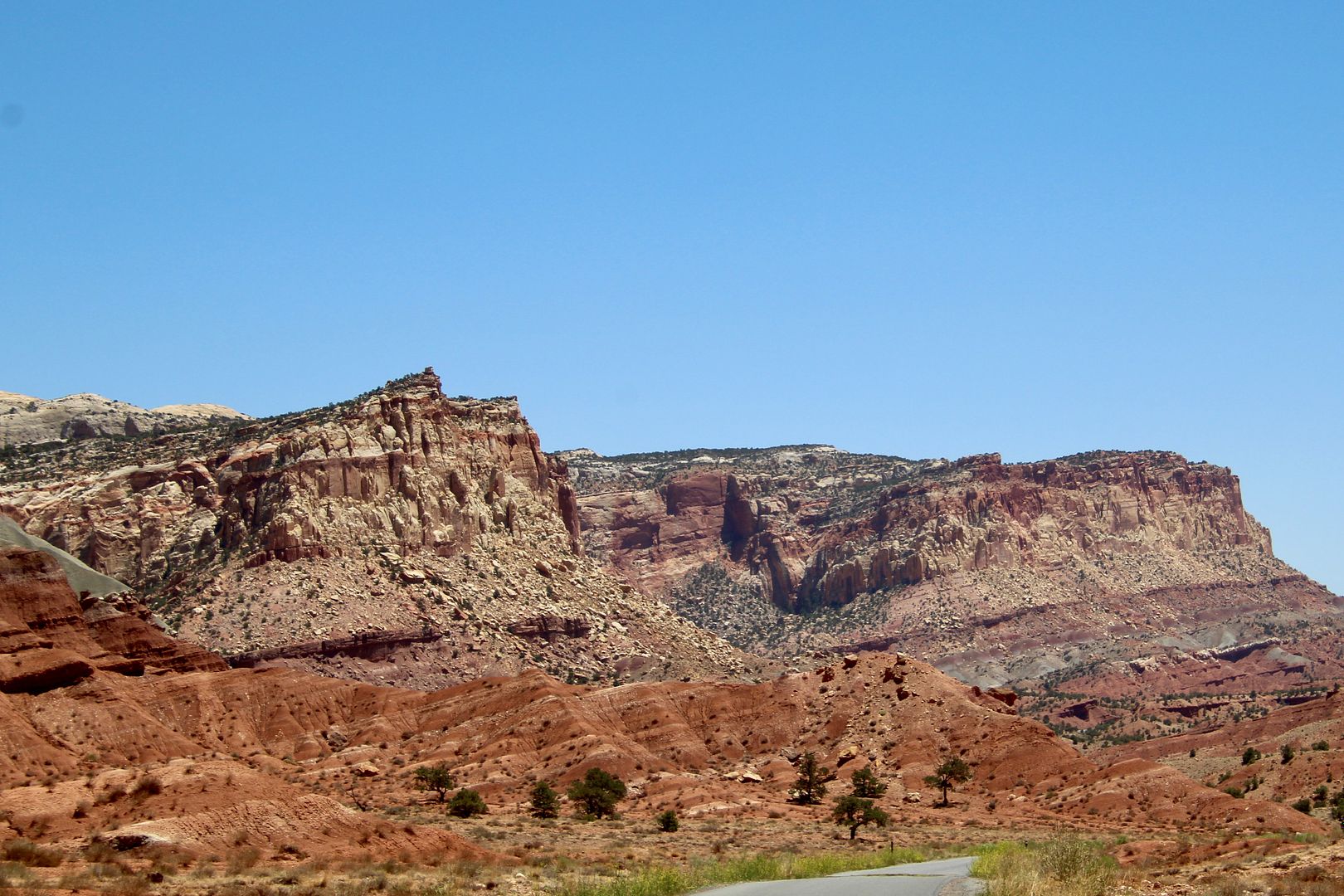

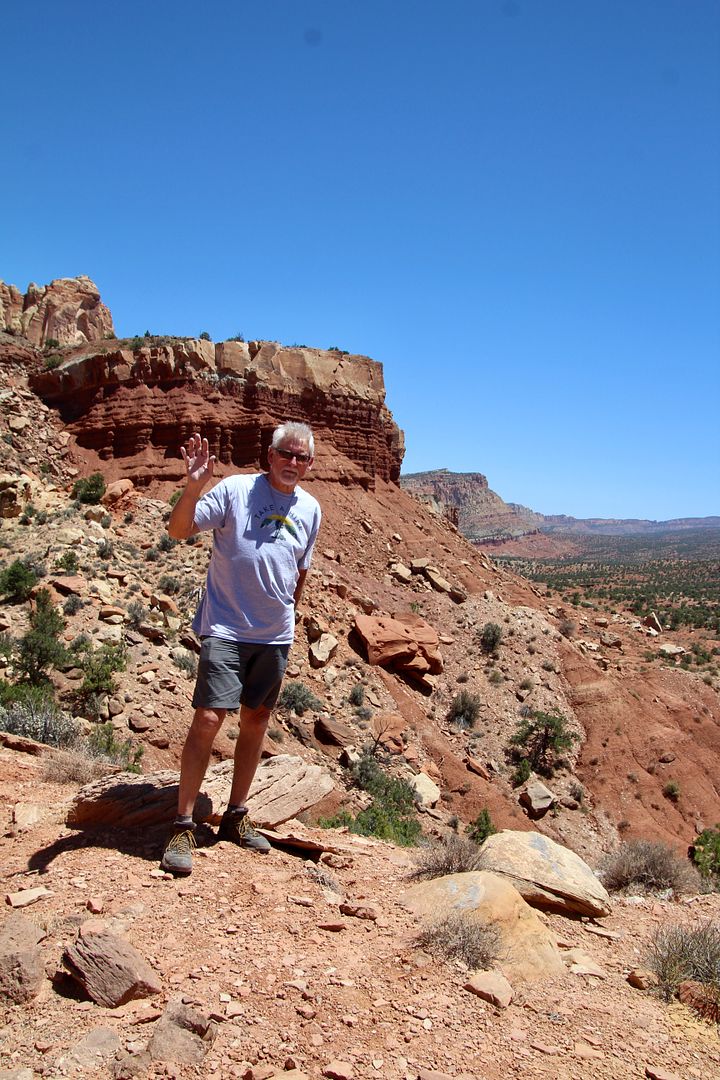
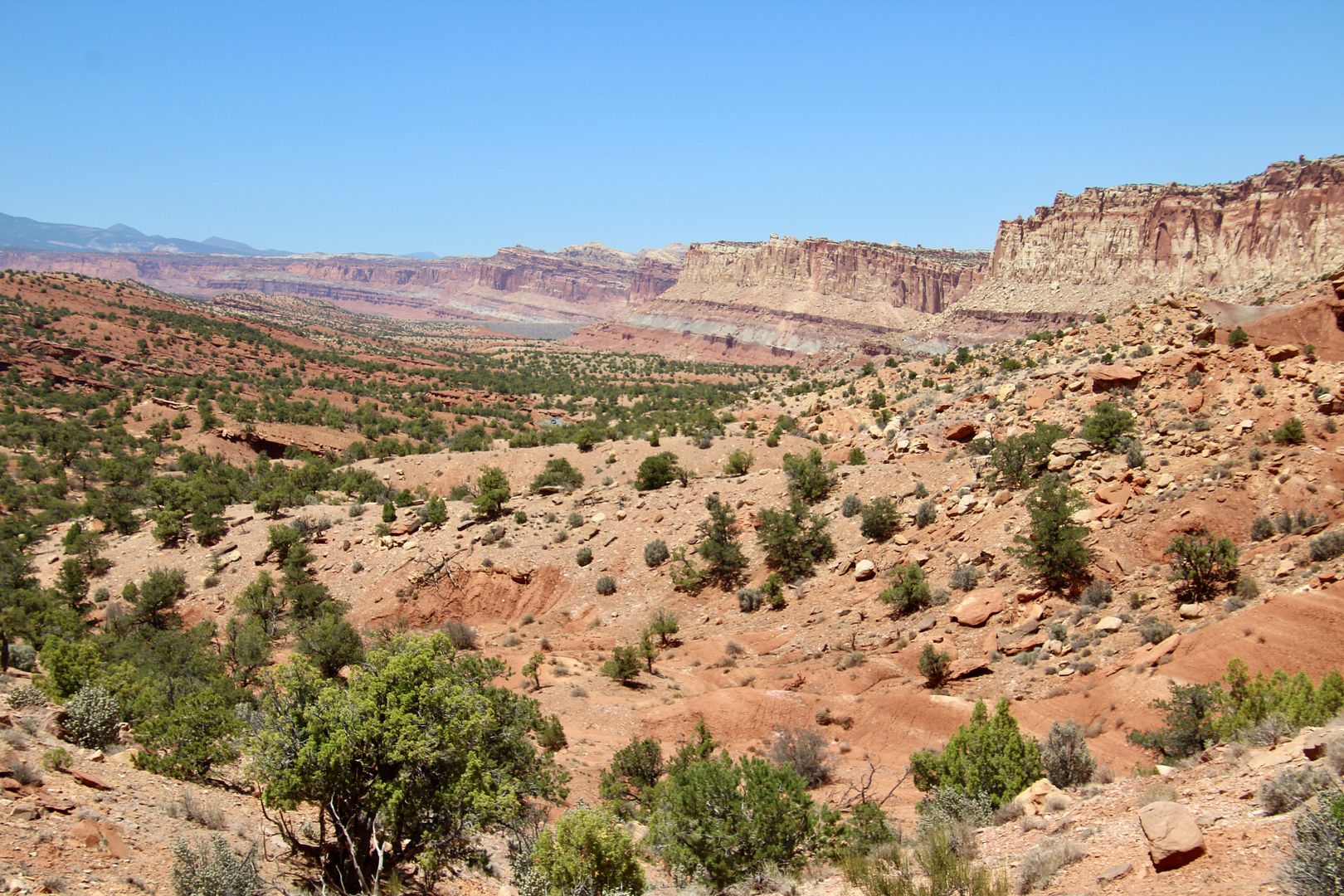
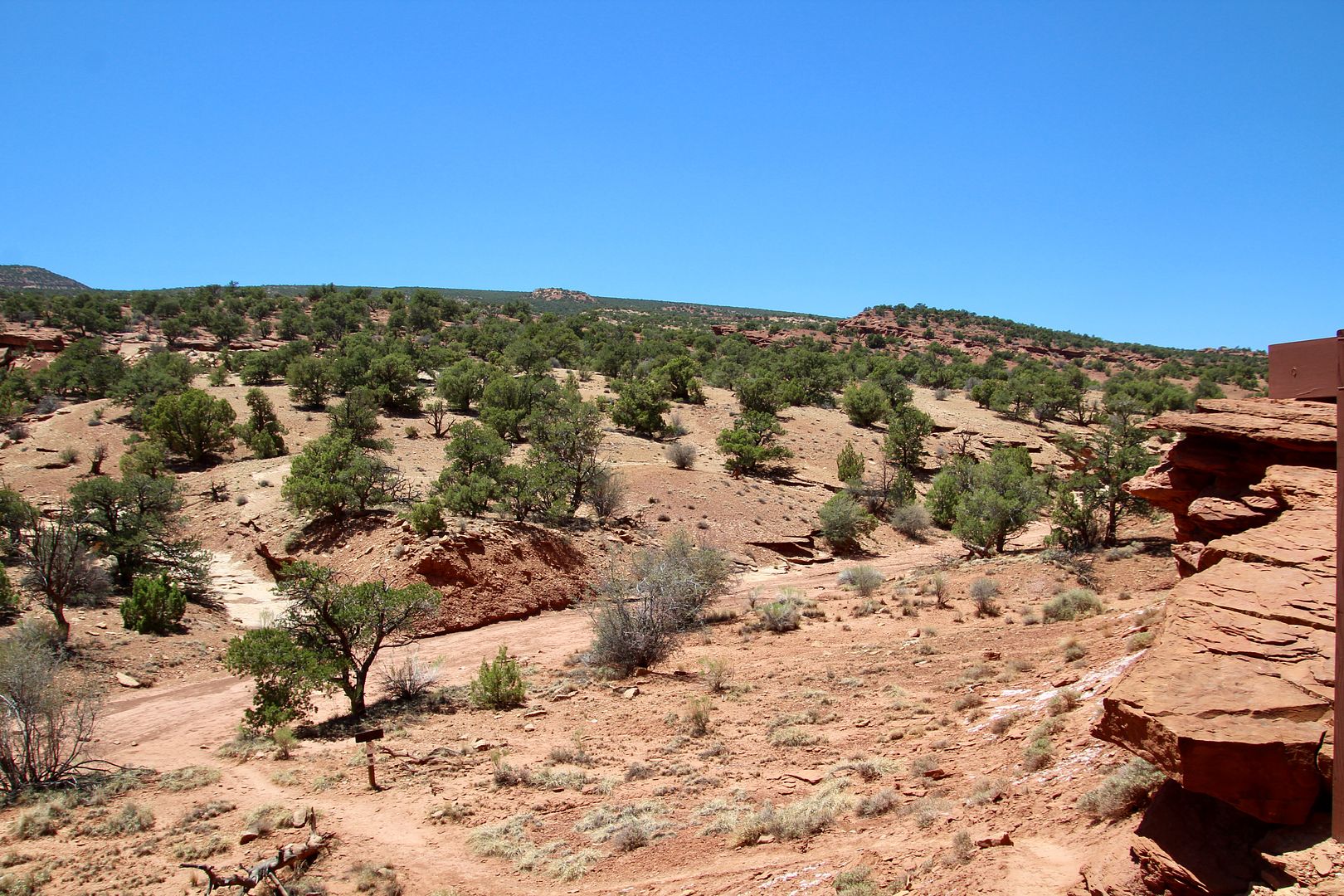


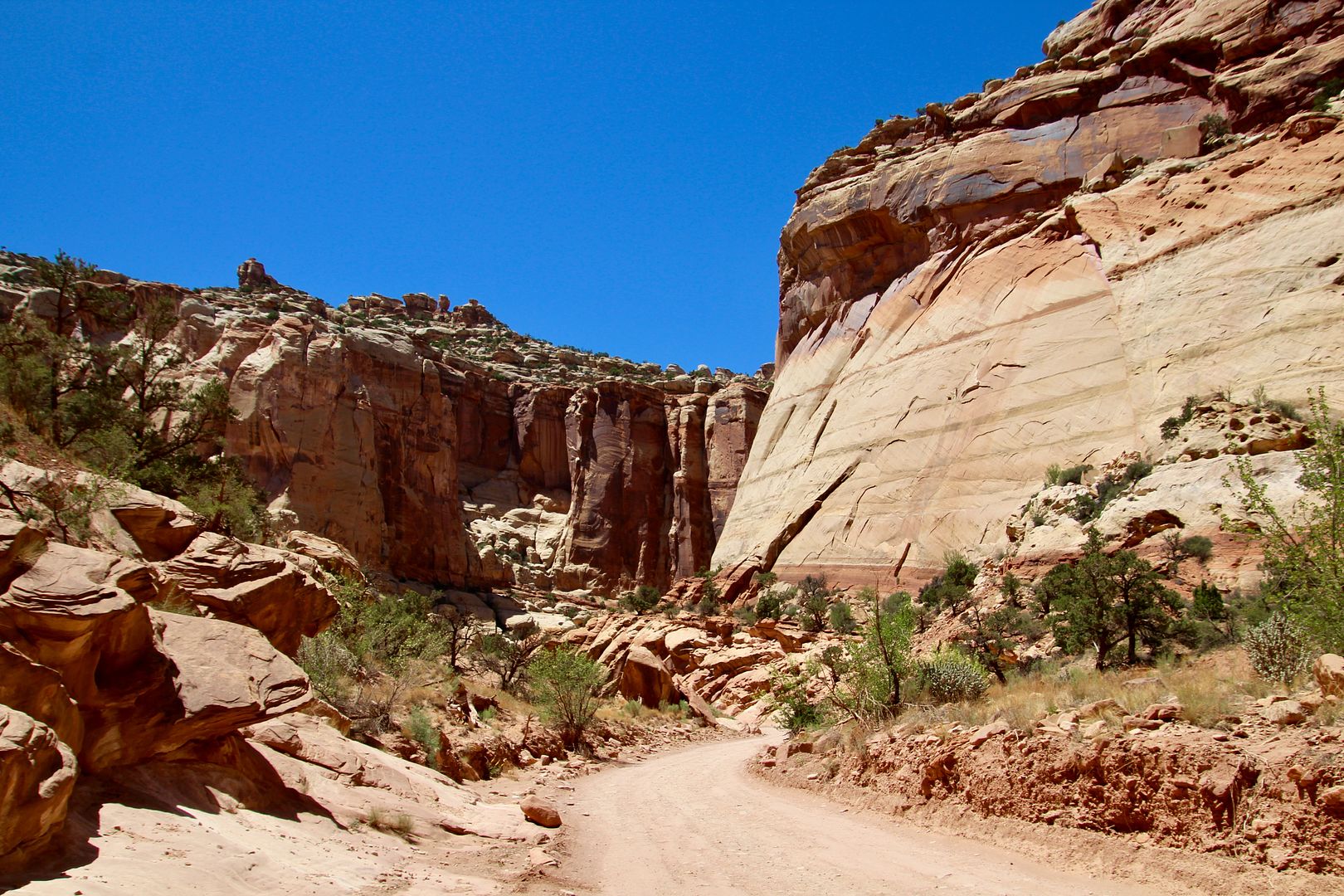
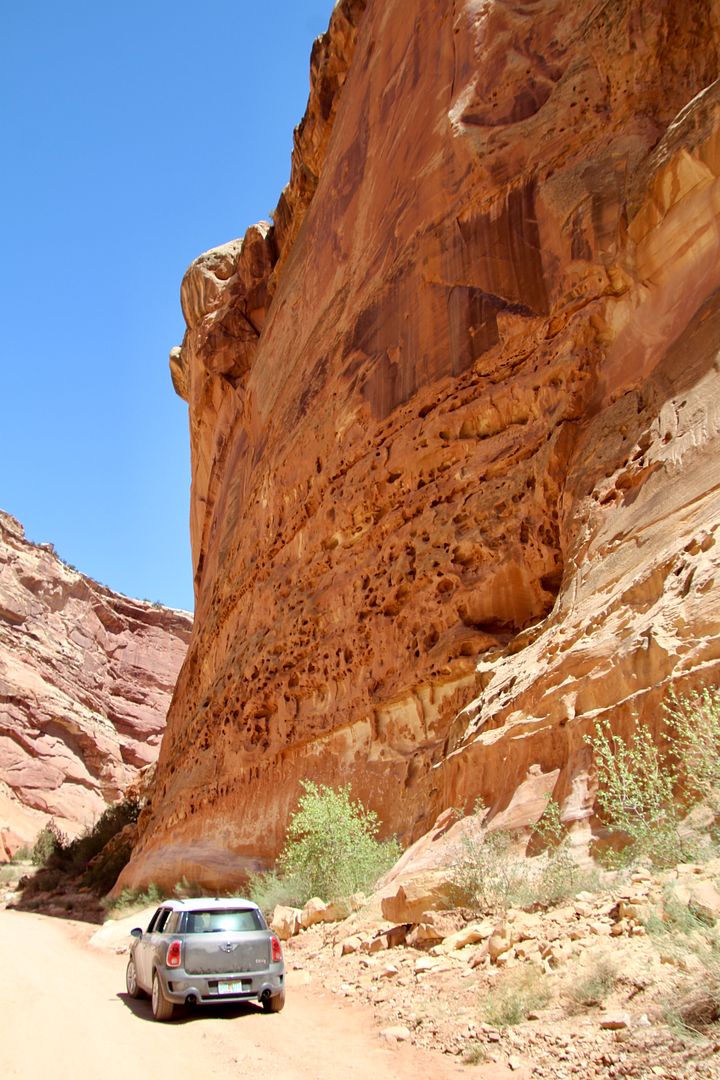
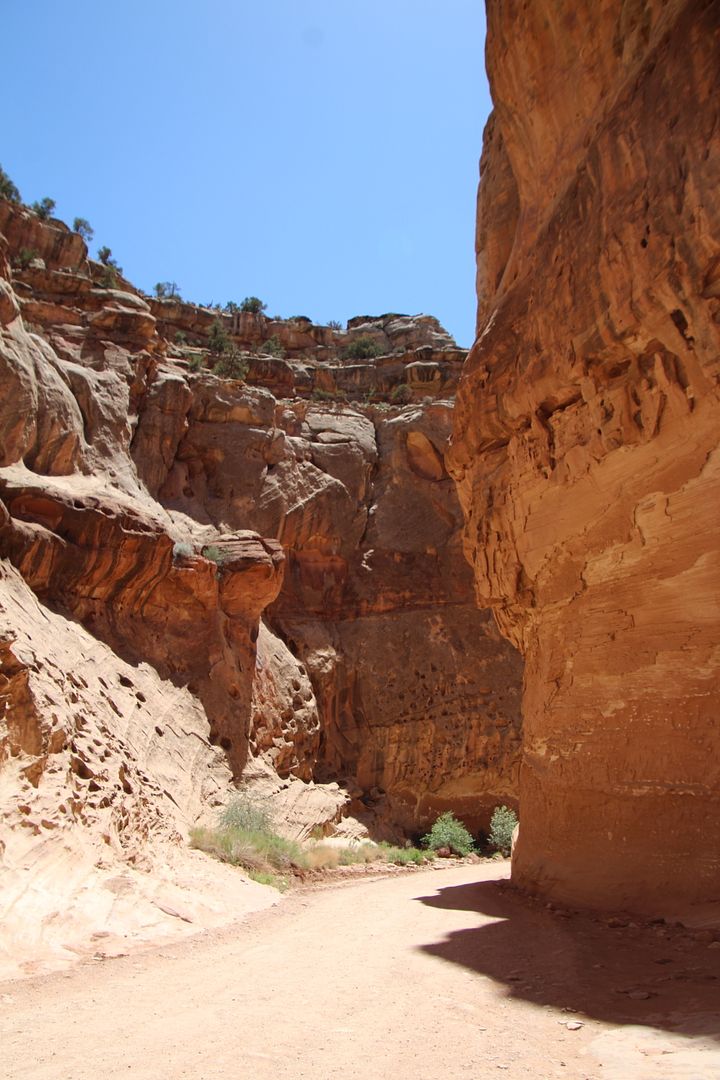
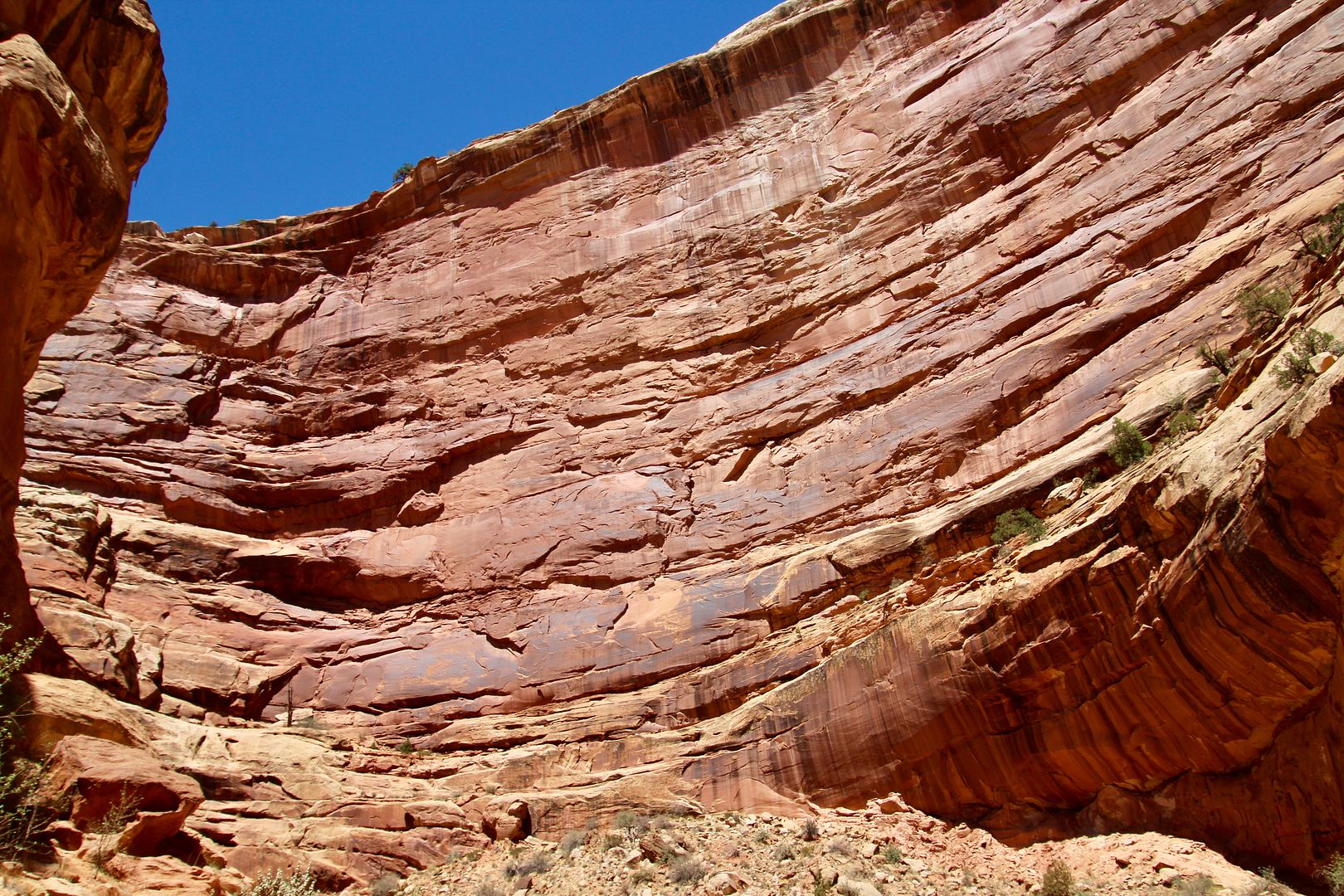
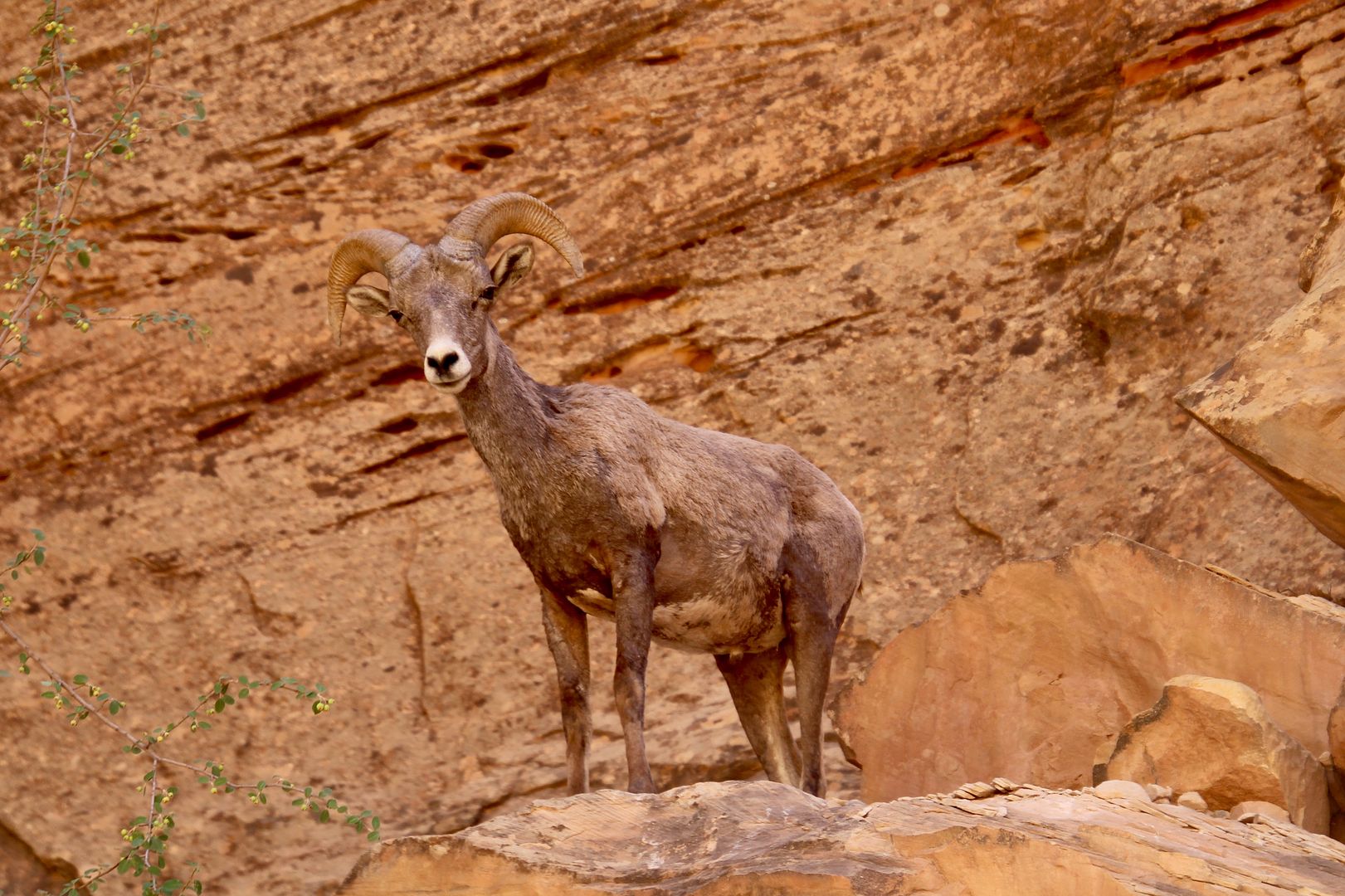
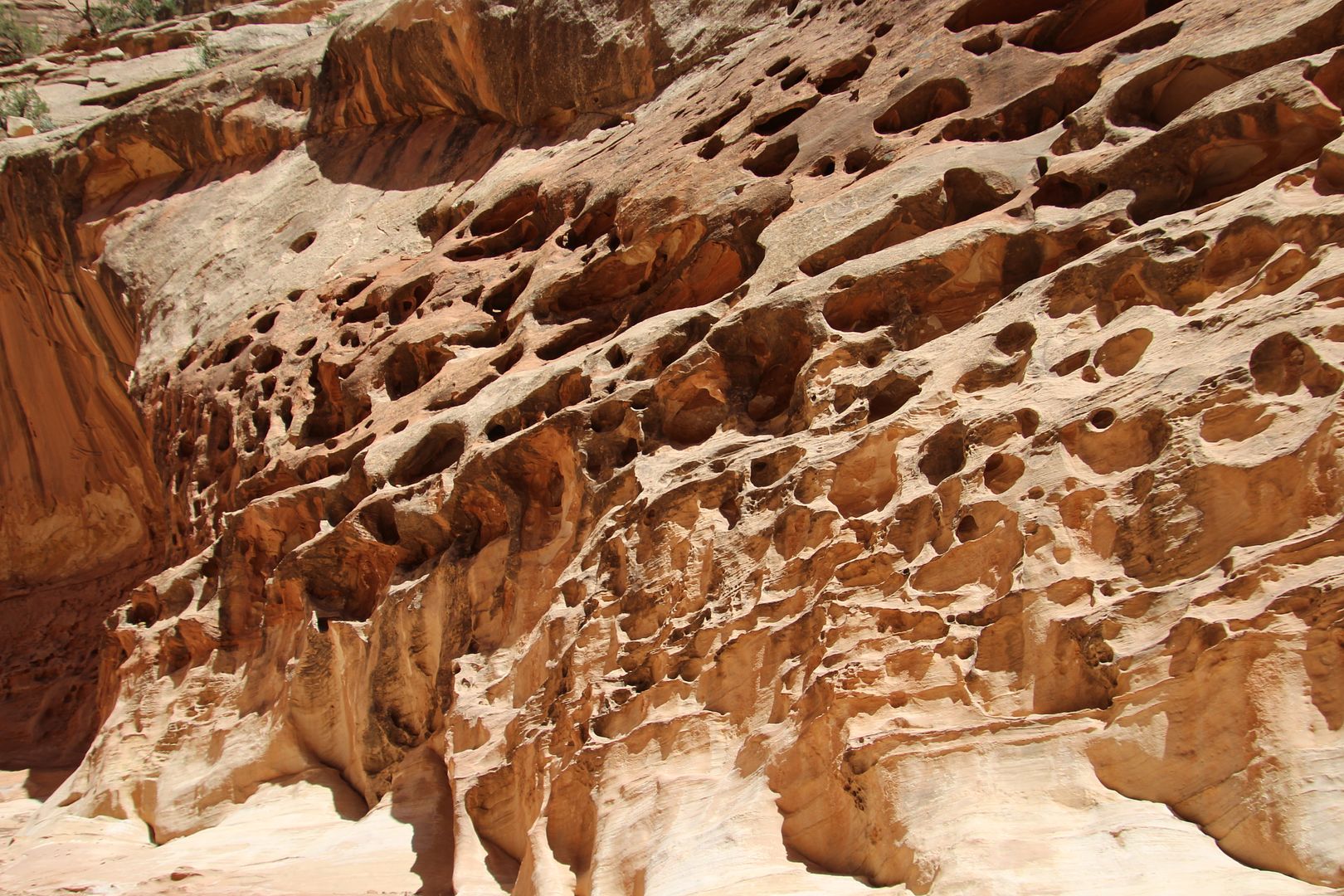
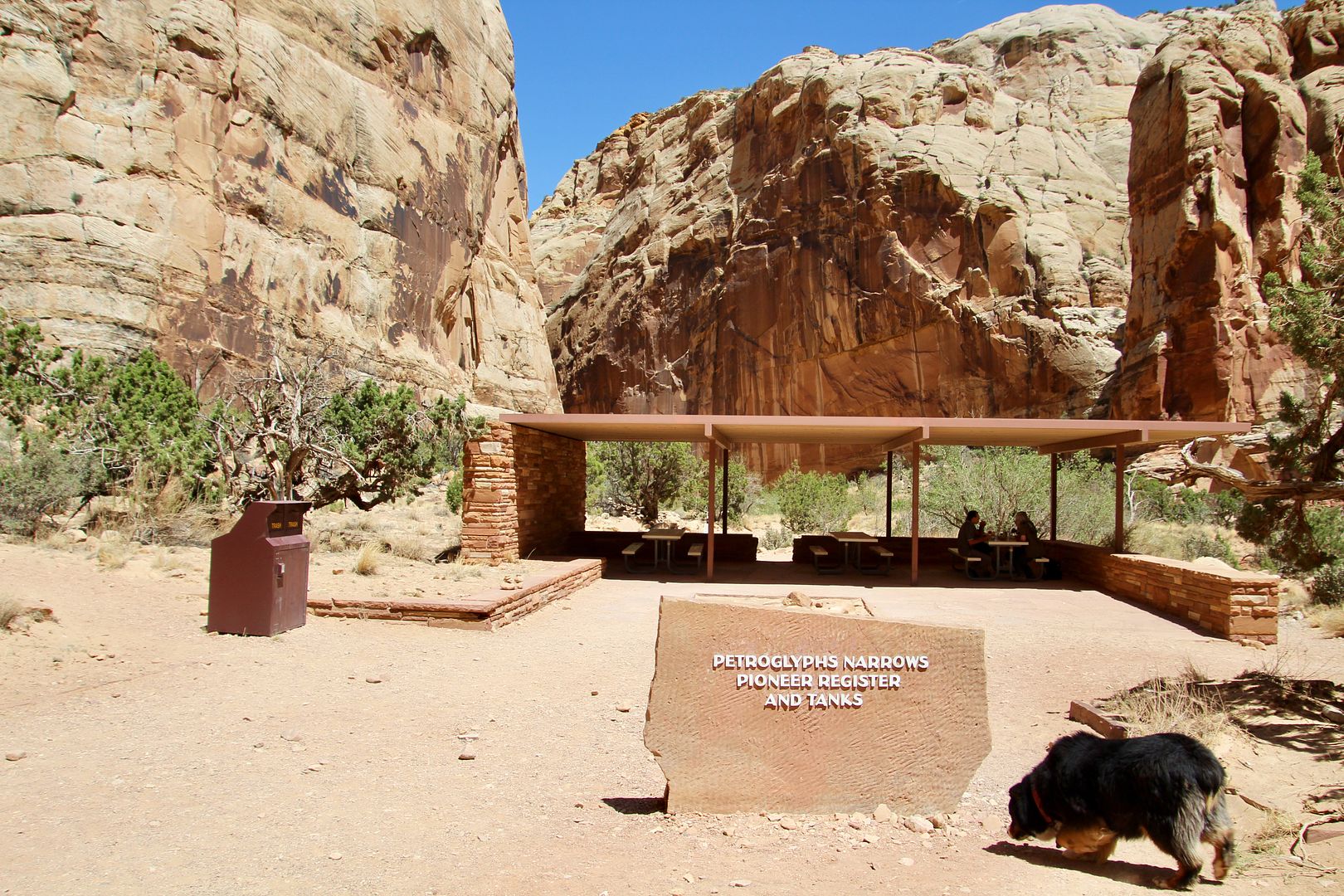
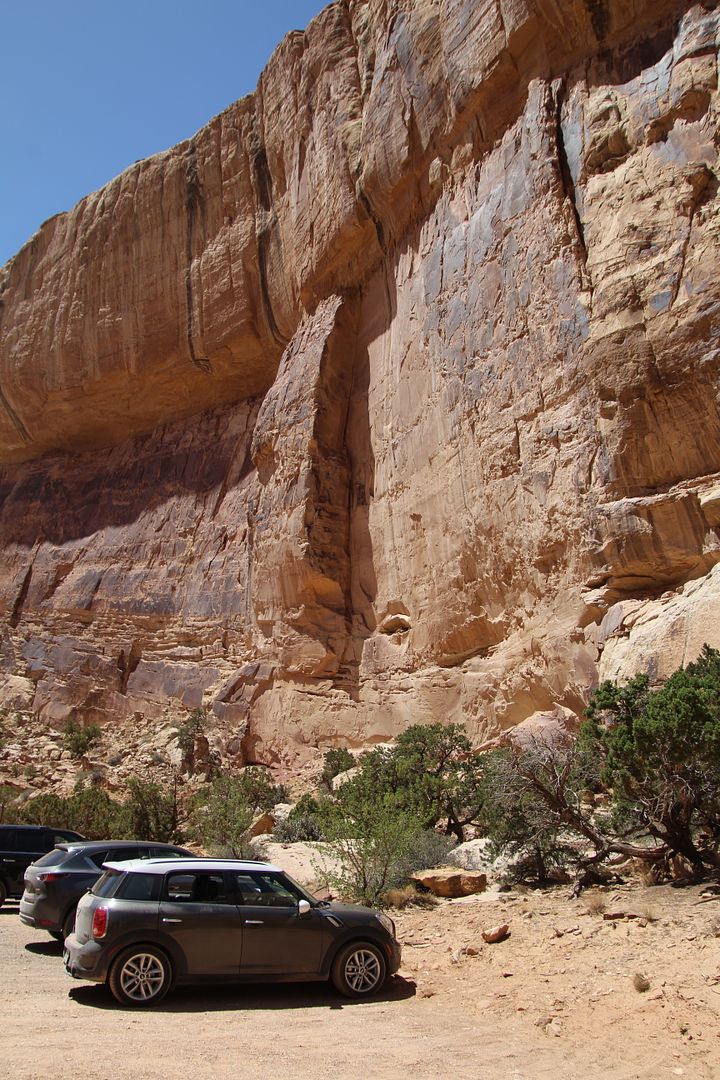
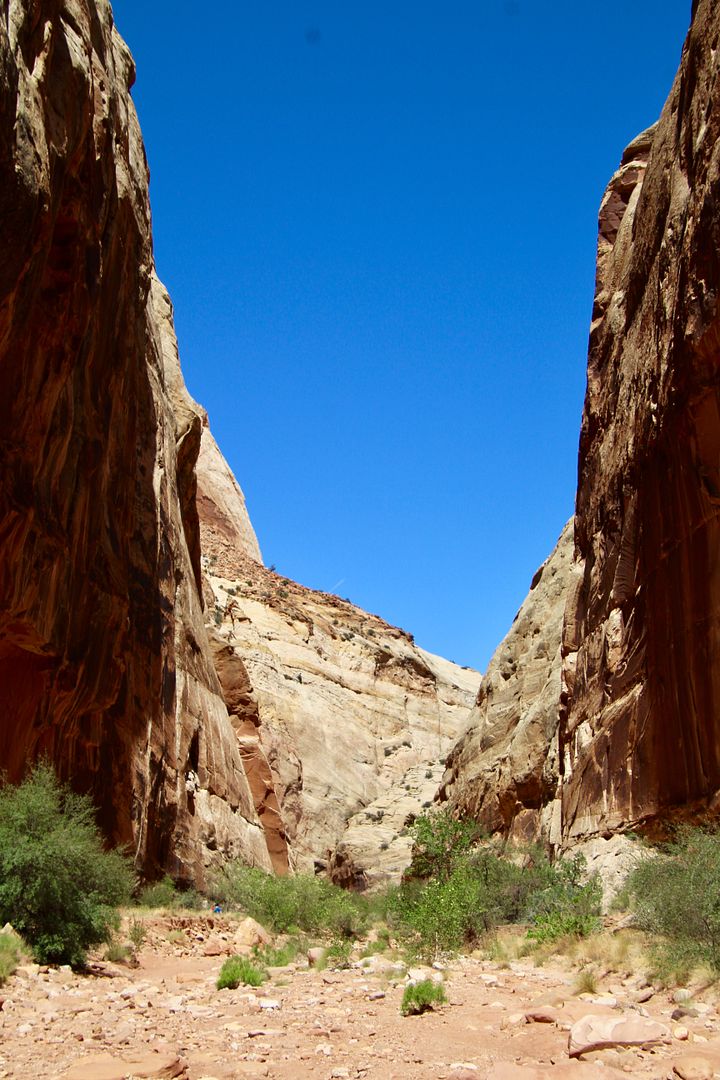
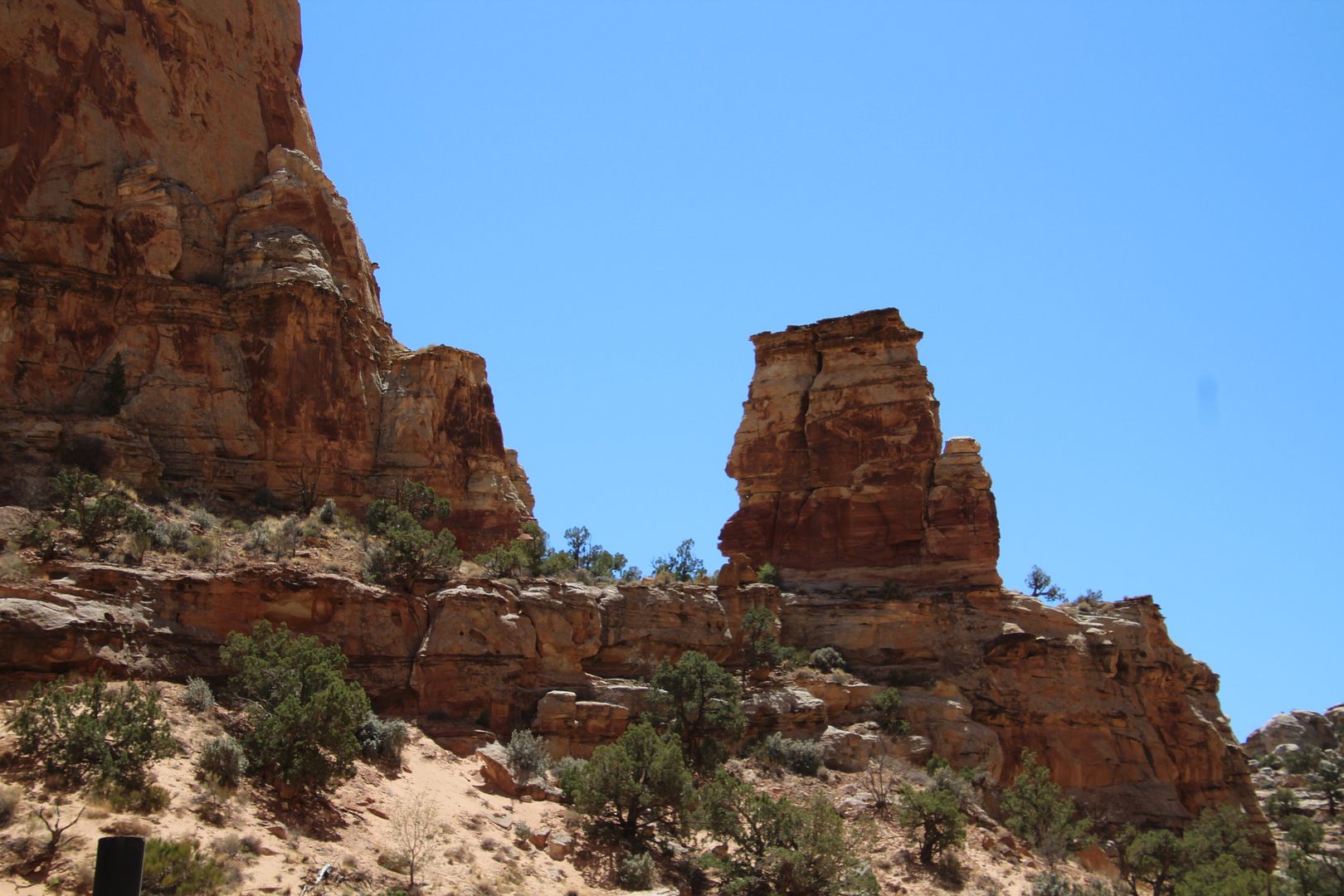
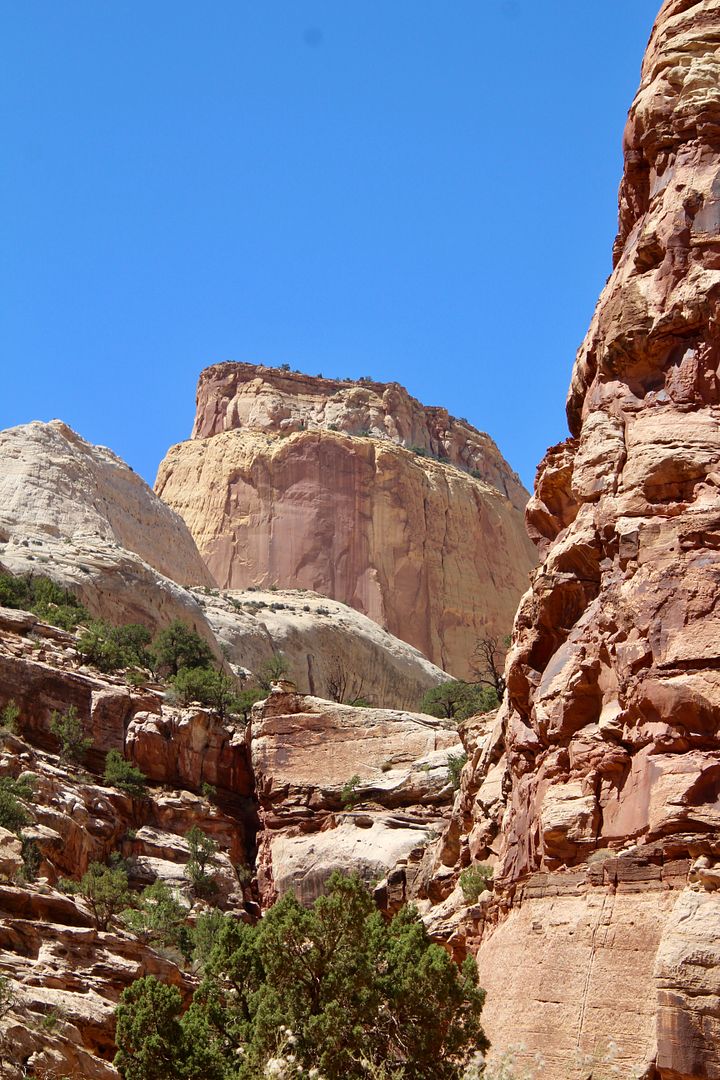
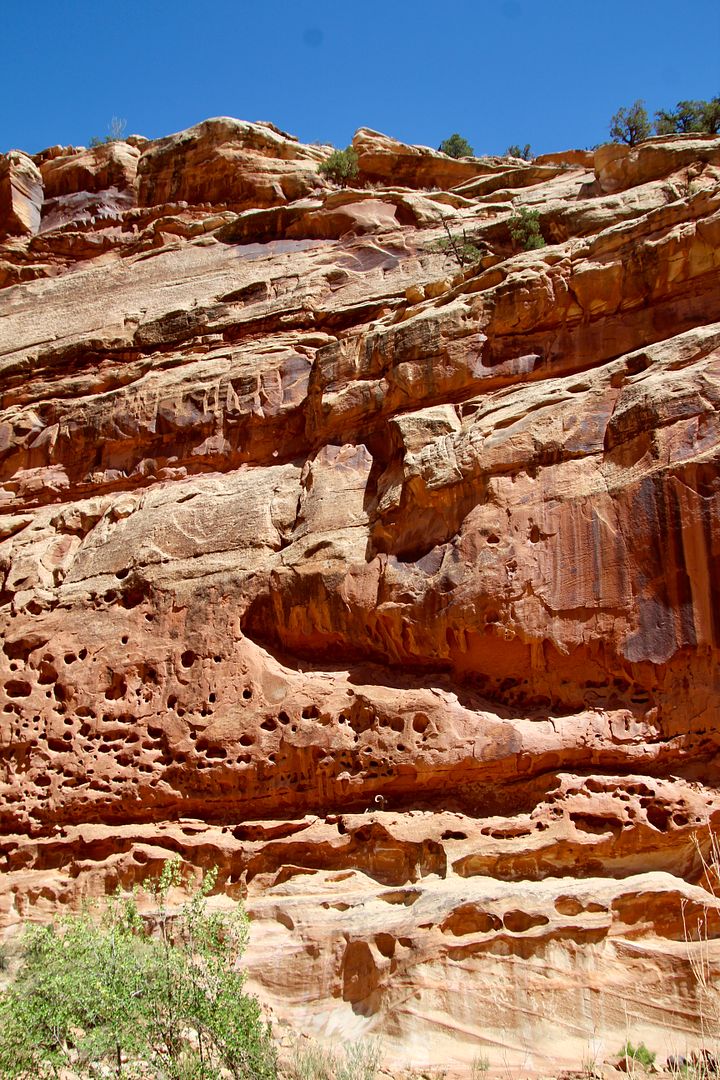
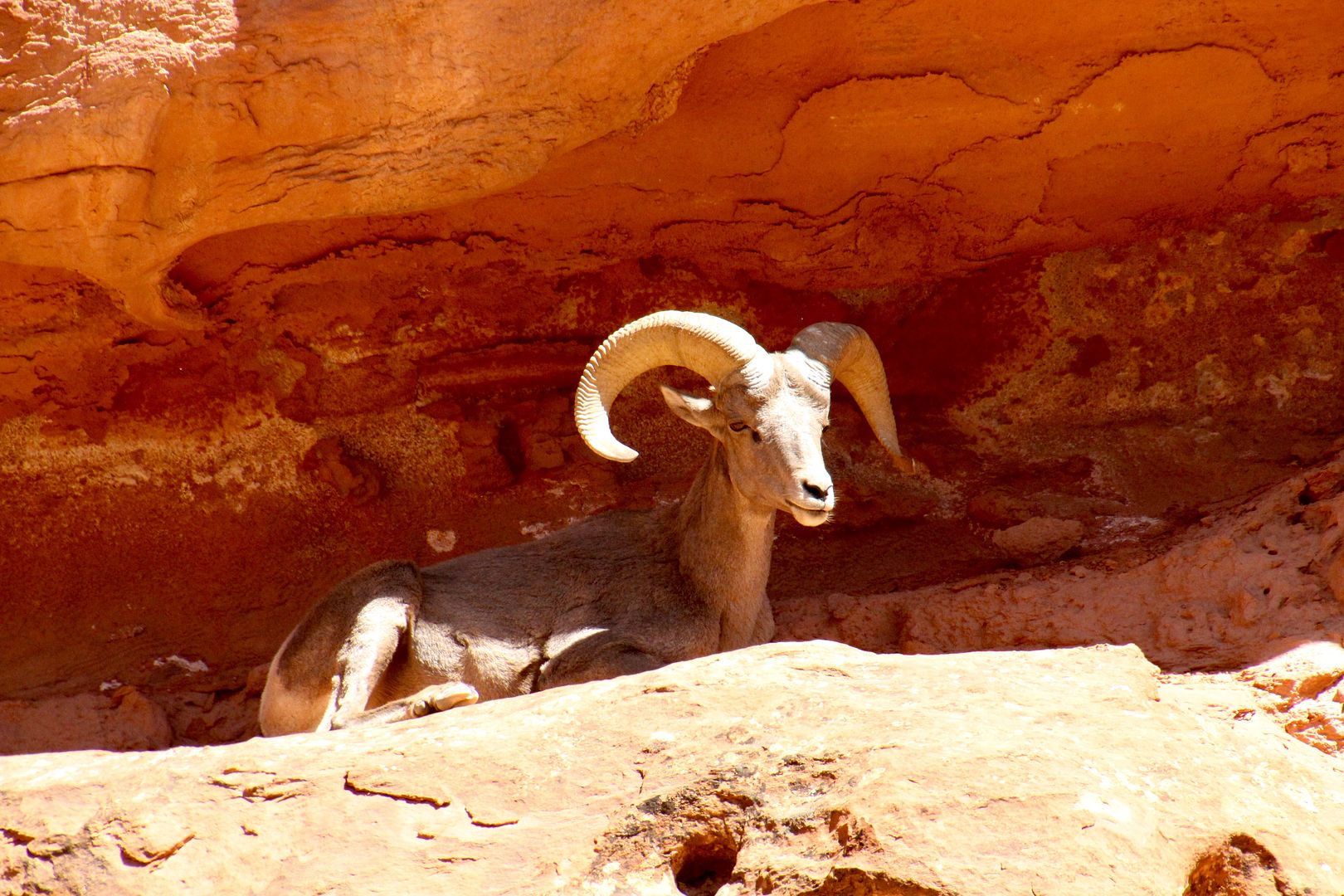
No comments:
Post a Comment